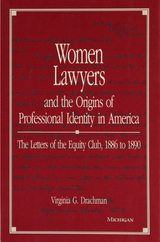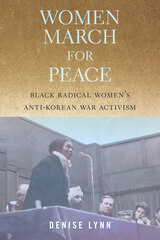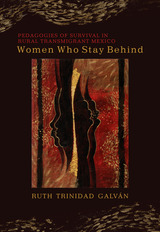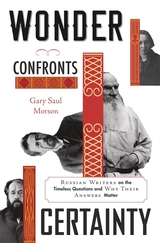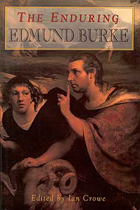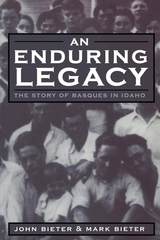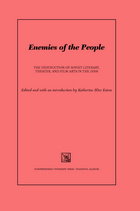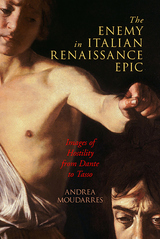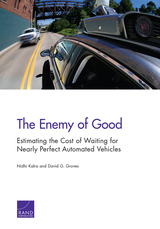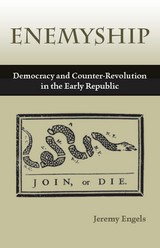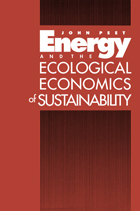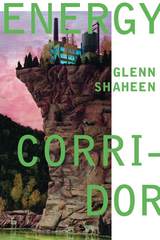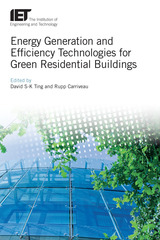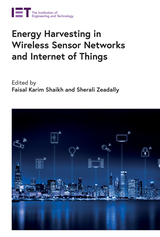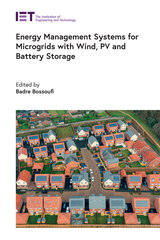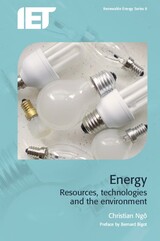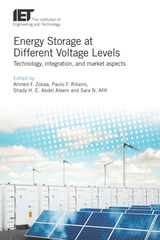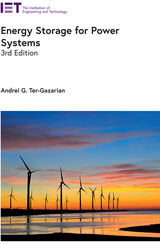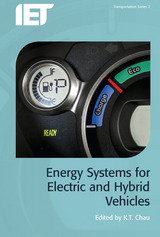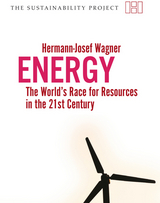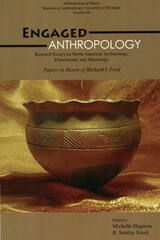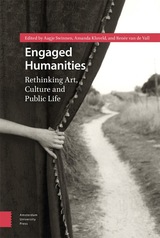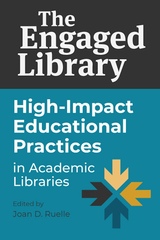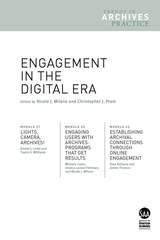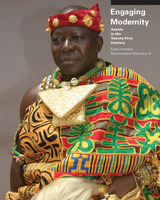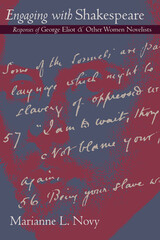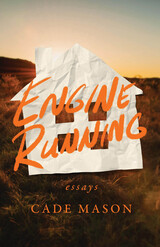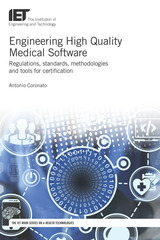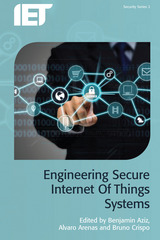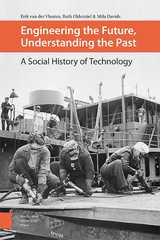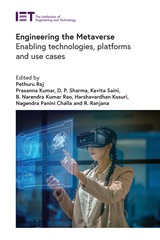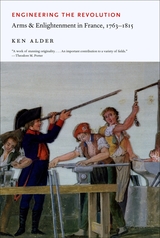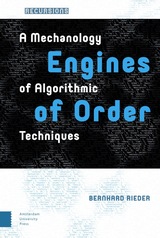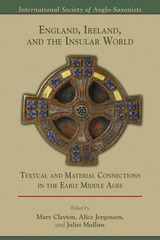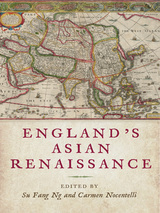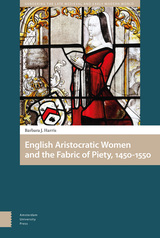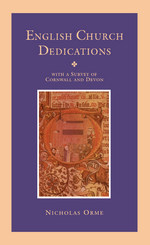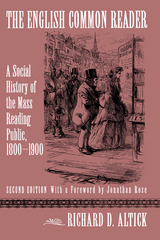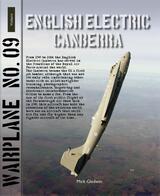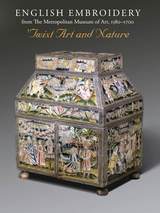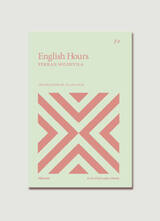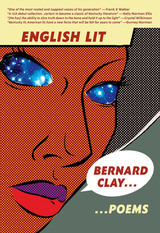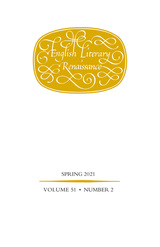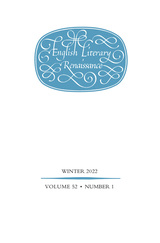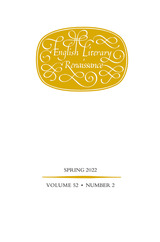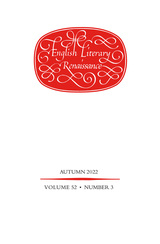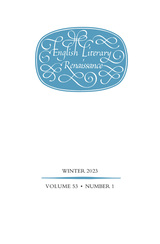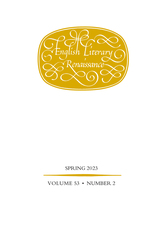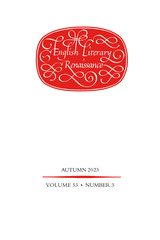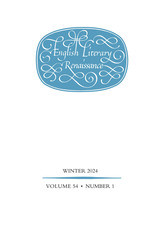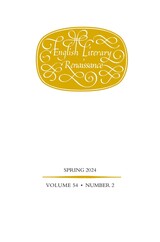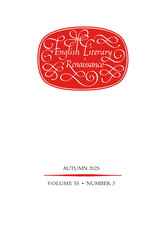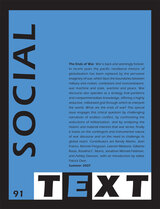 The Ends of War, Volume 25
Patrick Deer , ed.
Duke University Press This special issue of Social Text examines the self-perpetuating nature of postmodern war and war culture. It looks at the instrumental nature of war discourse as a political force and challenges its vision of endless warfare as the means to control both domestic and foreign populations in an era of globalization. Essays analyze the historical and material interests that war serves and challenge the seductive mythology of high-tech precision warfare, which allows the traumatic effects of war to be considered at a great distance. The issue also argues that the increasing tendency to discuss war metaphorically—as in the phrases “War on Drugs” and “War on Terror”—blurs the boundaries between civilian and soldier and between combatant and noncombatant and defers the human cost of permanent warfare. The contributors to this special issue—drawing on cultural studies, anthropology, economics, psychoanalysis, gender studies, postcolonial studies, and war literature—target the blind spots in current debates about war. One essay examines the financing of war, challenging the myth that our military-industrial complex generates economic bounty. Another contributor addresses strategies of high-tech urban warfare now being developed by the U.S. military and warns of the historical limits of colonial policing techniques that build on practices of surveillance. Other essays discuss the eroticization of “consent” embodied in the practice of torture at Abu Ghraib; the paradoxes of paramilitary policing and popular resistance along the militarized Mexico-U.S. border; and the continuities between the permanent war economy that emerged in the United States during World War II and the current disastrous confluence of militarism, global outsourcing, and economic depletion. Contributors. Ashley Dawson, Patrick Deer, Jonathan Michael Feldman, Kennan Ferguson, Jean Franco, Randy Martin, Leerom Medovoi, Rosalind C. Morris, Gilberto Rosas
Endurable Infinity: Poems
Tony Kitt
University of Pittsburgh Press, 2022 In Endurable Infinity, Tony Kitt creates his own tangential surrealism through wonder, intuition, and surprising connections. If the original surrealists of the 1930s sought to unleash the unconscious mind by bringing elements of dreams to the waking world with jarring juxtapositions, Kitt’s poetry is more about transmutation, or leaps, from word to word and phrase to phrase. He takes American poet Charles Borkhuis’s statement that contemporary surrealist poets write “from inside language” as a challenge and a call to action.
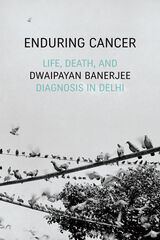 Enduring Cancer: Life, Death, and Diagnosis in Delhi
Dwaipayan Banerjee
Duke University Press, 2020 In Enduring Cancer Dwaipayan Banerjee explores the efforts of Delhi's urban poor to create a livable life with cancer as patients and families negotiate an overextended health system unequipped to respond to the disease. Owing to long wait times, most urban poor cancer patients do not receive a diagnosis until it is too late to treat the disease effectively. Drawing on ethnographic fieldwork in the city's largest cancer care NGO and at India's premier public health hospital, Banerjee describes how, for these patients, a cancer diagnosis is often the latest and most serious in a long series of infrastructural failures. In the wake of these failures, Banerjee tracks how the disease then distributes itself across networks of social relations, testing these networks for strength and vulnerability. Banerjee demonstrates how living with and alongside cancer is to be newly awakened to the fragility of social ties, some already made brittle by past histories, and others that are retested for their capacity to support.
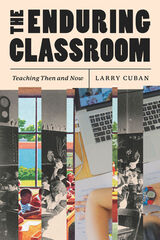 The Enduring Classroom: Teaching Then and Now
Larry Cuban
University of Chicago Press, 2023 A groundbreaking analysis of how teachers actually teach and have taught in the past.
The quality and effectiveness of teaching are a constant subject of discussion within the profession and among the broader public. Most of that conversation focuses on the question of how teachers should teach. In The Enduring Classroom, veteran teacher and scholar of education Larry Cuban explores different questions, ones that just might be more important: How have teachers actually taught? How do they teach now? And what can we learn from both?
Examining both past and present is crucial, Cuban explains. If reformers want teachers to adopt new techniques, they need to understand what teachers are currently doing if they want to have any hope of having their innovations implemented. Cuban takes us into classrooms then and now, using observations from contemporary research as well as a rich historical archive of classroom accounts, along the way asking larger questions about teacher training and the individual motivations of people in the classroom. Do teachers freely choose how to teach, or are they driven by their beliefs and values about teaching and learning? What role do students play in determining how teachers teach? Do teachers teach as they were taught? By asking and answering these and other policy questions with the aid of concrete data about actual classroom practices, Cuban helps us make a crucial step toward creating reforms that could actually improve instruction.
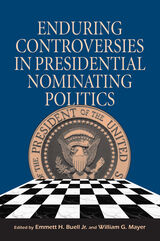 Enduring Controversies in Presidential Nominating Politics
Emmett H. Buell Jr
University of Pittsburgh Press, 2004
Enduring Controversies in Presidential Nominating Politics retraces the more than two hundred-year history of presidential elections in the United States to provide a primer on how the process has evolved from the days of the founders, through the heyday of nominating conventions, to today’s overwhelming interest in early primaries.
Original essays by the editors introduce, critique, and occasionally even refute a wide variety of historical readings including Alexander Hamilton’s defense of election procedures, excerpts of individual states’ nominations of candidates in 1824, an overview of the impact television has had on nominating conventions, and calls for a national rotating primary scheme in 2004. As a whole, the collection reveals the common threads that run through the history of the nominating process, and points out that today’s litany of complaints is not at all new.
 Enduring Digital Damage: Rhetorical Reckonings for Planetary Survival
Dustin Edwards
University of Alabama Press, 2025 Networks the intricate relationship between rapidly advancing digital technologies and environmental degradation and reveals the costs of our globally connected world. Taking a step back from the screens of electronic devices and exploring the profound impacts of digital technologies on our environment, Enduring Digital Damage lifts the veil on the “hidden costs” in our modern technological world. Dustin Edwards traces key moments in the lifecycle of technology—such as the extraction of raw materials to the disposal of electronic waste—to uncover the often overlooked consequence of our digital age. He illuminates how data centers, mining operations, and other digital infrastructures contribute to environmental harm and how the rapidly increasing demand for land use and water access is essential to sustain our growing digital needs. Weaving together narratives of technological advancement and ecological destruction, Edwards presents a comprehensive analysis of the true cost of our digital lives. By drawing on case studies, cultural critique, and a critical examination of labor and sustainability, Enduring Digital Damage reveals the deeper histories and ongoing struggles that make our digital lives possible, urging readers to imagine the possibility of a less harmful and extractive world.
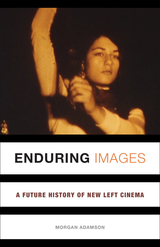 Enduring Images: A Future History of New Left Cinema
Morgan Adamson
University of Minnesota Press, 2018 An integrated look at the political films of the 1960s and ’70s and how the New Left transformed cinema
A timely reassessment of political film culture in the 1960s and ’70s, Enduring Images examines international cinematic movements of the New Left in light of sweeping cultural and economic changes of that era. Looking at new forms of cinematic resistance—including detailed readings of particular films, collectives, and movements—Morgan Adamson makes a case for cinema’s centrality to the global New Left. Enduring Images details how student, labor, anti-imperialist, Black Power, and second-wave feminist movements broke with auteur cinema and sought to forge local and international solidarities by producing political essay films, generating new ways of being and thinking in common. Adamson produces a comparative and theoretical account of New Left cinema that engages with discussions of work, debt, information, and resistance. Enduring Images argues that the cinemas of the New Left are sites to examine, through the lens of struggle, the reshaping of global capitalism during the pivotal moment in which they were made, while at the same time exploring how these movements endure in contemporary culture and politics. Including in-depth discussions of Third Cinema in Argentina, feminist cinema in Italy, Newsreel movements in the United States, and cybernetics in early video, Enduring Images is an essential examination of the political films of the 1960s and ’70s.
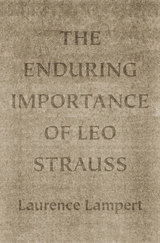 The Enduring Importance of Leo Strauss
Laurence Lampert
University of Chicago Press, 2013 The Enduring Importance of Leo Strauss takes on the crucial task of separating what is truly important in the work of Leo Strauss from the ephemeral politics associated with his school. Laurence Lampert focuses on exotericism: the use of artful rhetoric to simultaneously communicate a socially responsible message to the public at large and a more radical message of philosophic truth to a smaller, more intellectually inclined audience. Largely forgotten after the Enlightenment, exotericism, he shows, deeply informed Strauss both as a reader and as a philosophic writer—indeed, Lampert argues, Strauss learned from the finest practitioners of exoteric writing how to become one himself.
Examining some of Strauss’s most important books and essays through this exoteric lens, Lampert reevaluates not only Strauss but the philosophers—from Plato to Halevi to Nietzsche—with whom Strauss most deeply engaged. Ultimately Lampert shows that Strauss’s famous distinction between ancient and modern thinkers is primarily rhetorical, one of the great examples of Strauss’s exoteric craft. Celebrating Strauss’s achievements while recognizing one main shortcoming—unlike Nietzsche, he failed to appreciate the ramifications of modern natural science for philosophy and its public presentation—Lampert illuminates Strauss as having even greater philosophic importance than we have thought before.
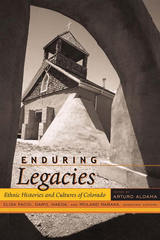 Enduring Legacies: Ethnic Histories and Cultures of Colorado
Arturo J. Aldama
University Press of Colorado, 2011 Traditional accounts of Colorado's history often reflect an Anglocentric perspective that begins with the 1859 Pikes Peak Gold Rush and Colorado's establishment as a state in 1876. Enduring Legacies expands the study of Colorado's past and present by adopting a borderlands perspective that emphasizes the multiplicity of peoples who have inhabited this region.
Addressing the dearth of scholarship on the varied communities within Colorado-a zone in which collisions structured by forces of race, nation, class, gender, and sexuality inevitably lead to the transformation of cultures and the emergence of new identities-this volume is the first to bring together comparative scholarship on historical and contemporary issues that span groups from Chicanas and Chicanos to African Americans to Asian Americans.
This book will be relevant to students, academics, and general readers interested in Colorado history and ethnic studies.
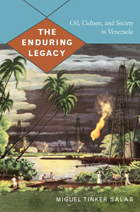 The Enduring Legacy: Oil, Culture, and Society in Venezuela
Miguel Tinker Salas
Duke University Press, 2009 Oil has played a major role in Venezuela’s economy since the first gusher was discovered along Lake Maracaibo in 1922. As Miguel Tinker Salas demonstrates, oil has also transformed the country’s social, cultural, and political landscapes. In The Enduring Legacy, Tinker Salas traces the history of the oil industry’s rise in Venezuela from the beginning of the twentieth century, paying particular attention to the experiences and perceptions of industry employees, both foreign and Venezuelan. He reveals how class ambitions and corporate interests combined to reshape many Venezuelans’ ideas of citizenship. Middle-class Venezuelans embraced the oil industry from the start, anticipating that it would transform the country by introducing modern technology, sparking economic development, and breaking the landed elites’ stranglehold. Eventually Venezuelan employees of the industry found that their benefits, including relatively high salaries, fueled loyalty to the oil companies. That loyalty sometimes trumped allegiance to the nation-state. North American and British petroleum companies, seeking to maintain their stakes in Venezuela, promoted the idea that their interests were synonymous with national development. They set up oil camps—residential communities to house their workers—that brought Venezuelan employees together with workers from the United States and Britain, and eventually with Chinese, West Indian, and Mexican migrants as well. Through the camps, the companies offered not just housing but also schooling, leisure activities, and acculturation into a structured, corporate way of life. Tinker Salas contends that these practices shaped the heart and soul of generations of Venezuelans whom the industry provided with access to a middle-class lifestyle. His interest in how oil suffused the consciousness of Venezuela is personal: Tinker Salas was born and raised in one of its oil camps.
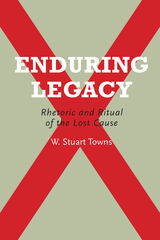 Enduring Legacy: Rhetoric and Ritual of the Lost Cause
W. Stuart. Towns
University of Alabama Press, 2013 Explores the crucial role of rhetoric and oratory in creating and propagating a “Lost Cause” public memory of the American South
Enduring Legacy explores the vital place of ceremonial oratory in the oral tradition in the South and analyses how rituals such as Confederate Memorial Day, Confederate veteran reunions, and dedication of Confederate monuments have contributed to creating and sustaining a Lost Cause paradigm for Southern identity. Towns studies in detail secessionist and Civil War speeches and how they laid the groundwork for future generations, including Southern responses to the civil rights movement, and beyond.
The Lost Cause orators that came after the Civil War, Towns argues, helped to shape a lasting mythology of the brave Confederate martyr, and the Southern positions for why the Confederacy lost and who was to blame. Innumerable words were spent—in commemorative speeches, newspaper editorials, and statehouse oratory—condemning the evils of Reconstruction, redemption, reconciliation, and the new and future South. Towns concludes with an analysis of how Lost Cause myths still influence Southern and national perceptions of the region today, as evidenced in debates over the continued deployment of the Confederate flag and the popularity of Civil War reenactments.
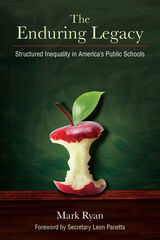 The Enduring Legacy: Structured Inequality in America's Public Schools
Mark Ryan
University of Michigan Press, 2020 Enduring Legacy describes a multifaceted paradox—a constant struggle between those who espouse a message of hope and inclusion and others who systematically plan for exclusion. Structured inequality in the nation’s schools is deeply connected to social stratification within American society. This paradox began in the eighteenth century and has proved an enduring legacy. Mark Ryan provides historical, political, and pedagogical contexts for teacher candidates—not only to comprehend the nature of racial segregation but, as future educators, to understand their own professional responsibilities, both in the community and in the school, to strive for an integrated classroom where all children have a chance to succeed. The goal of providing every child a world-class education is an ethical imperative, an inherent necessity for a functioning pluralistic democracy. The challenge is both great and growing, for teachers today will face an evermore segregated American classroom.
An Enduring Legacy: The Story Of Basques In Idaho
Mark Bieter
University of Nevada Press, 2003 In this volume, brothers Mark and John Bieter chronicle three generations of Basque presence in Idaho from 1890 to the present, resulting in an engaging story that begins with a few solitary sheepherders and follows their evolution into the prominent ethnic community of today.
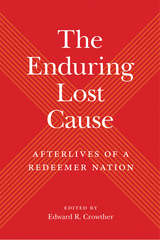 The Enduring Lost Cause: Afterlives of a Redeemer Nation
Edward R. Crowther
University of Tennessee Press, 2020 Marking the fortieth anniversary of Charles Reagan Wilson’s classic Baptized in Blood: The Religion of the Lost Cause, 1865–1920, this volume collects essays by such scholars as Carolyn Reneé Dupont, Sandy Dwayne Martin, Keith Harper, and Wilson himself to show how various aspects of the Lost Cause ideology persist into the present. The Enduring Lost Cause examines the lasting legacy of a belief system that sought to vindicate the antebellum South and the Confederate fight to preserve it. Contributors treat such topics as symbolism, the perpetuation of the Lost Cause in education, and the effects of the Lost Cause on gender and religion, as well as examining ways the ideology has changed over time.
The twelve essays gathered here help the reader understand the development of a cultural phenomenon that affected generations of southerners and northerners alike, arising out of the efforts of former Confederates to make sense of their defeat, even at the expense of often mythologizing it. From fresh looks at towering figures of the Lost Cause (to reexamining the role of African Americans in disseminating the ideology (in the form of a religious explanation for suffering), the essayists carefully analyze the tensions between the past and the present, true belief and commercialization, continuity and change. Ultimately the narrative of the Lost Cause persists worldwide, merging with American exceptionalism to become a pillar of the conservative wing of US politics, as well as a lasting cultural legacy. The Enduring Lost Cause provides a window into this world, helping us to understand the present in the context of the past.
 Enduring Monuments: Formative Period Transformations at Pukara, Peru
Elizabeth A. Klarich
University Press of Colorado, 2025 Enduring Monuments traces the architectural histories of monumental complexes and public spaces of the Pukara site in the Lake Titicaca Basin. Using data from three distinct areas—the Qalasaya, the Central Pampa, and the Northern Platform—Elizabeth A. Klarich provides a powerful diachronic and comparative perspective for understanding social and political transformations during the Late Formative period in Peru.
In the early twentieth century, Peruvian scholars Luis E. Valcárcel and Julio C. Tello visited Pukara and shared images of its multicolored pottery and unique stone sculptures with colleagues across the world. A number of both small-scale and multiyear field projects have followed, with goals of refining Lake Titicaca Basin cultural chronologies, tracking Pukara-style material culture in the south-central Andes, restoring the structural integrity of the Qalasaya, and documenting the reoccupations of Pukara by Colla, Inca, and early Spanish colonial populations. Enduring Monuments synthesizes the findings of these diverse projects and shares the results of fieldwork and artifact analysis by the Pukara Archaeological Project since 2000.
Using a “building biography” approach that tracks initial construction, major remodeling, and subsequent expansion efforts during the Middle and Late Formative periods (400 BC–AD 200), Klarich highlights transformations in material culture, settlement patterns, social hierarchy, and daily practices at Pukara and contemporaneous sites across the Titicaca Basin and situates Formative period Pukara within the vast anthropological and archaeological literature addressing monumentality, ritual practice, and incipient urbanism in complex societies in South America and beyond.
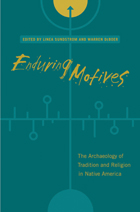 Enduring Motives: The Archaeology of Tradition and Religion in Native America
Linea Sundstrom
University of Alabama Press, 2012 Enduring Motives examines tradition and religious beliefs as they are expressed in landscape, the built environment, visual symbols, stories, and ritual. Bringing together archaeologists and Native American experts, this volume focuses on long-lived religious traditions of the native peoples of the Americas and how religion codifies, justifies, and reinforces these traditions by placing a high value on continuity of beliefs and practice.
Using clues from the archaeological record to piece together the oldest religions of the Americas, Enduring Motives is organized into four parts. Part 1 creates continuity through structure, iconography, and sacred stories that correspond to culture-specific symbolic representations of the universe. Part 2 explores the encoding of tradition in place and object, or how people use objects to enliven tradition and pass it on to future generations. Part 3 examines stability and change and shows how traditions can evolve over time without losing their core cultural significance. The final part recognizes deep-time traditions through the evidence of ancient cosmology and religious tradition.
Spanning cultures as diverse as the Aztec, Plains Indians, Hopi, Mississippian, and Southwest Pueblo, Enduring Motives brings to light new insights on ancient religious beliefs, practices, methods, and techniques, which allow otherwise intangible facets of culture to be productively explored. Contributors
Wesley Bernardini / James S. Brown Jr. / Cheryl Claassen / John E. Clark / ArleneColman / Warren DeBoer / Robert L. Hall /Kelley Hays-Gilpin / Alice Beck Kehoe /John E. Kelly / Stephen H. Lekson / ColinMcEwan / John Norder / Jeffrey Quilter /Amy Roe / Peter G. Roe / Linea Sundstrom
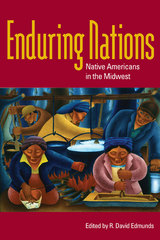 Enduring Nations: Native Americans in the Midwest
Edited by R. David Edmunds
University of Illinois Press, 2007 Enduring Nations documents how tribal peoples have adapted to cultural change while shaping midwestern history. Examining the transformation of Native American communities, which often occurred in response to shifting government policy, the contributors explore the role of women, controversial tribal enterprises and economies, social welfare practices, and native peoples' frequent displacement to locations such as reservations and urban centers. Central to both past and contemporary discussions of Native American cultural change is whether Native American identity should be determined by genetics, shared cultural values, or a combination of the two. Contributors are Bradley J. Birzer, Brenda J. Child, Thomas Burnell Colbert, Gregory Evans Dowd, R. David Edmunds, Brian Hosmer, Rebecca Kugel, James B. LaGrand, Melissa L. Meyer, Lucy Eldersveld Murphy, Alan G. Shackelford, Susan Sleeper-Smith, and Stephen Warren.
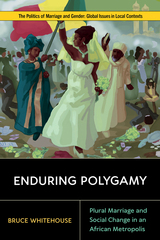 Enduring Polygamy: Plural Marriage and Social Change in an African Metropolis
Bruce Whitehouse
Rutgers University Press, 2023 Why hasn’t polygamous marriage died out in African cities, as experts once expected it would? Enduring Polygamy considers this question in one of Africa’s fastest-growing cities: Bamako, the capital of Mali, where one in four wives is in a polygamous marriage. Using polygamy as a lens through which to survey sweeping changes in urban life, it offers ethnographic and demographic insights into the customs, gender norms and hierarchies, kinship structures, and laws affecting marriage, and situates polygamy within structures of inequality that shape marital options, especially for young Malian women. Through an approach of cultural relativism, the book offers an open-minded but unflinching perspective on a contested form of marriage. Without shying away from questions of patriarchy and women’s oppression, it presents polygamy from the everyday vantage points of Bamako residents themselves, allowing readers to make informed judgments about it and to appreciate the full spectrum of human cultural diversity.
 Enduring Postwar: Yasuoka Shotaro and Literary Memory in Japan
Kendall Heitzman
Vanderbilt University Press Yasuoka Shotaro (1920–2013) was perfectly situated to become Japan's premier chronicler of the Showa period (1926–89). Over fifty years as a writer, Yasuoka produced stories, novels, plays, and essays, as well as monumental histories that connected his own life to those of his ancestors. He was also the only major Japanese writer to live in the American South during the Civil Rights Movement, when he spent most of an academic year at Vanderbilt University in Nashville. In 1977, he translated Alex Haley's Roots into Japanese.
For a long period, Yasuoka was at the center of the Japanese literary establishment, serving on prize committees and winning the major literary prizes of the era: the Akutagawa, the Noma, the Yomiuri, and the Kawabata. But what makes Yasuoka fascinating as a writer is the way that he consciously, deliberately resisted accepted narratives of modern Japanese history through his approach to personal and collective memory.
In Enduring Postwar, the first literary and biographical study of Yasuoka in English, Kendall Heitzman explores the element of memory in Yasuoka's work in the context of his life and evolving understanding of postwar Japan.
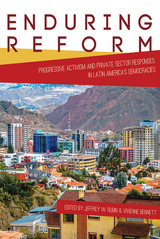 Enduring Reform: Progressive Activism and Private Sector Responses in Latin America's Democracies
Jeffrey W. Rubin
University of Pittsburgh Press, 2015 Over the last twenty years, business responses to progressive reform in Latin America have shifted dramatically. Until the 1990s, progressive movements in Latin America suffered violent repression sanctioned by the private sector and other socio-political elites. The powerful case studies in this volume show how business responses to reform have become more open–ended as Latin America’s democracies have deepened, with repression tempered by the economic uncertainties of globalization, the political and legal constraints of democracy, and shifting cultural understandings of poverty and race.
Enduring Reform presents five case studies from Mexico, Brazil, and Argentina in which marginalized groups have successfully forged new cultural and economic spaces and won greater autonomy and political voice. Bringing together NGO’s, local institutions, social movements, and governments, these initiatives have developed new mechanisms to work ‘within the system,’ while also challenging the system’s logic and constraints.
Through firsthand interviews, the contributors capture local businesspeople’s understandings of these progressive initiatives and record how they grapple with changes they may not always welcome, but must endure. Among their criteria, the contributors evaluate the degree to which businesspeople recognize and engage with reform movements and how they frame electoral counterproposals to reformist demands. The results show an uneven response to reform, dependent on cultural as much or more than economic factors, as businesses move to decipher, modify, collaborate with, outmaneuver, or limit progressive innovations.
From the rise of worker-owned factories in Buenos Aires, to the collective marketing initiatives of impoverished Mayans in San Cristóbal de las Casas, the success of democracy in Latin America depends on powerful and cooperative social actions and actors, including the private sector. As the cases in Enduring Reform show, the democratic context of Latin America today presses businesspeople to endure, accept, and at times promote progressive change in unprecedented ways, even as they act to limit and constrain it.
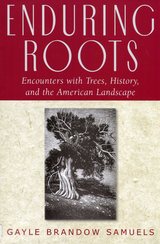 Enduring Roots: Encounters with Trees, History, and the American Landscape
Gayle Brandow Samuels
Rutgers University Press, 2005 Trees are the grandest and most beautiful plant creations on earth. From their shade-giving, arching branches and strikingly diverse bark to their complex root systems, trees represent shelter, stability, place, and community as few other living objects can. Enduring Roots tells the stories of historic American trees, including the oak, the apple, the cherry, and the oldest of the world’s trees, the bristlecone pine. These stories speak of our attachment to the land, of our universal and eternal need to leave a legacy, and demonstrate that the landscape is a gift, to be both received and, sometimes, tragically, to be destroyed.
Each chapter of this book focuses on a specific tree or group of trees and its relationship to both natural and human history, while exploring themes of community, memory, time, and place. Readers learn that colonial farmers planted marker trees near their homes to commemorate auspicious events like the birth of a child, a marriage, or the building of a house. They discover that Benjamin Franklin’s Newtown Pippin apples were made into a pie aboard Captain Cook’s Endeavour while the ship was sailing between Tahiti and New Zealand. They are told the little-known story of how the Japanese flowering cherry became the official tree of our nation’s capital—a tale spanning many decades and involving an international cast of characters. Taken together, these and many other stories provide us with a new ways to interpret the American landscape.
“It is my hope,” the author writes, “that this collection will be seen for what it is, a few trees selected from a great forest, and that readers will explore both—the trees and the forest—and find pieces of their own stories in each.”
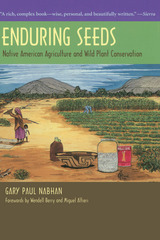 Enduring Seeds: Native American Agriculture and Wild Plant Conservation
Gary Paul Nabhan; Forewords by Wendell Berry and Miguel Altieri
University of Arizona Press, 2002 As biological diversity continues to shrink at an alarming rate, the loss of plant species poses a threat seemingly less visible than the loss of animals but in many ways more critical. In this book, one of America's leading ethnobotanists warns about our loss of natural vegetation and plant diversity while providing insights into traditional Native agricultural practices in the Americas.
Gary Paul Nabhan here reveals the rich diversity of plants found in tropical forests and their contribution to modern crops, then tells how this diversity is being lost to agriculture and lumbering. He then relates "local parables" of Native American agriculture—from wild rice in the Great Lakes region to wild gourds in Florida—that convey the urgency of this situation and demonstrate the need for saving the seeds of endangered plants. Nabhan stresses the need for maintaining a wide gene pool, not only for the survival of these species but also for the preservation of genetic strains that can help scientists breed more resilient varieties of other plants.
Enduring Seeds is a book that no one concerned with our environment can afford to ignore. It clearly shows us that, as agribusiness increasingly limits the food on our table, a richer harvest can be had by preserving ancient ways.
This edition features a new foreword by Miguel Altieri, one of today's leading spokesmen for sustainable agriculture and the preservation of indigenous farming methods.
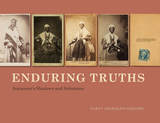 Enduring Truths: Sojourner's Shadows and Substance
Darcy Grimaldo Grigsby
University of Chicago Press, 2015 Runaway slave Sojourner Truth gained fame in the nineteenth century as an abolitionist, feminist, and orator and earned a living partly by selling photographic carte de visite portraits of herself at lectures and by mail. Cartes de visite, similar in format to calling cards, were relatively inexpensive collectibles that quickly became a new mode of mass communication. Despite being illiterate, Truth copyrighted her photographs in her name and added the caption “I Sell the Shadow to Support the Substance. Sojourner Truth.”
Featuring the largest collection of Truth’s photographs ever published, Enduring Truths is the first book to explore how she used her image, the press, the postal service, and copyright laws to support her activism and herself. Darcy Grimaldo Grigsby establishes a range of important contexts for Truth’s portraits, including the strategic role of photography and copyright for an illiterate former slave; the shared politics of Truth’s cartes de visite and federal banknotes, which were both created to fund the Union cause; and the ways that photochemical limitations complicated the portrayal of different skin tones. Insightful and powerful, Enduring Truths shows how Truth made her photographic portrait worth money in order to end slavery—and also became the strategic author of her public self.
 The Enduring Work of Biography: James Boswell’s “Life of Johnson,” 1791-2020
Greg Clingham
University of Delaware Press, 2026 The Enduring Work of Biography seeks to revitalize appreciation of Boswell’s great biography for a new generation of scholars, students, and general readers. Engaging accessibly and informatively with biographical, historical, critical, and textual matters, and drawing on the Yale Edition of the Private Papers of James Boswell, Enduring Work discusses Boswell’s collaboration with others (both alive and dead) in researching, writing, revising, proofing, publishing, and promoting his biography of Johnson. Central to Boswell’s concept of life writing, is memory, and Enduring Work highlights both its dynamic and collaborative force in the Life of Johnson. This collection is book-ended by an introduction that considers the critical reception of the Life of Johnson, and an epilogue that suggests its continuing critical insight and relevance. A closing chapter and two appendixes survey the history of the Life of Johnson as a best-selling book for over two centuries, an extraordinary collaboration between readers and publishers, and between Boswell and Johnson themselves that is still evolving.
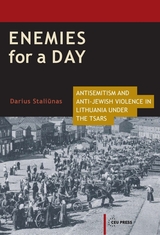 Enemies for a Day: Antisemitism and Anti-Jewish Violence in Lithuania under the Tsars
Darius Staliunas
Central European University Press, 2015 It begins by illustrating how widespread anti-Jewish feelings were among the Christian population in 19 th century, focusing on blood libel accusations as well as describing the role of modern antisemitism. Secondly, it tries to identify the structural preconditions as well as specific triggers that turned anti-Jewish feelings into collective violence and analyzes the nature of this violence. Lastly, pogroms in Lithuania are compared to anti-Jewish violence in other regions of the Russian Empire and East Galicia. This research is inspired by the cultural turn in social sciences, an approach that assumes that violence is filled with meaning, which is “culturally constructed, discursively mediated, symbolically saturated, and ritually regulated.” The author argues that pogroms in Lithuania instead followed a communal pattern of ethnic violence and was very different from deadly pogroms in other parts of the Russian Empire.
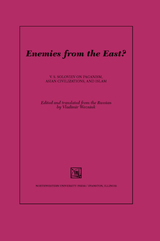 Enemies from the East?: V. S. Soloviev on Paganism, Asian Civilizations, and Islam
Edited by Vladimir Wozniuk
Northwestern University Press, 2007 As cultural conflicts roil the world, the idea of a “clash of civilizations” has lately taken hold, with commentators from both East and West weighing the religious and political disparities that affect global unity. For all its present currency and urgency, the idea is nothing new. In various contexts V. S. Soloviev (1853–1900), the most distinguished representative of nineteenth-century Russian religious philosophy, anticipated our current global dilemma by more than a hundred years. These essays, presented together for the first time in English, consider from a number of perspectives how a future clash of cultures between East and West threatens human progress toward the harmonic unity that, for Soloviev, represented the ultimate human telos.
The six essays comprising this book span Soloviev’s publishing career, beginning with “The Mythological Process in Ancient Paganism,” written at the age of twenty, and ending with “Muhammad, His Life and Religious Teaching,” which appeared four years before Soloviev’s death at forty-seven. Throughout, Soloviev grapples with commonalities and differences apparent in the moral frameworks of civilizations since antiquity; and in religious and cultural practices, from Europe through the Middle East to Asia. His probing of the sources of religious morality and political authority in human history reinvigorated Russian intellectual interest in the East/West question in his time and still resonates powerfully in our own.
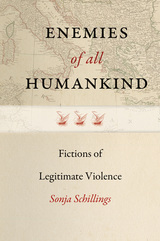 Enemies of All Humankind: Fictions of Legitimate Violence
Sonja Schillings
Dartmouth College Press, 2016 Hostis humani generis, meaning “enemy of humankind,” is the legal basis by which Western societies have defined such criminals as pirates, torturers, or terrorists as beyond the pale of civilization. Sonja Schillings argues that the legal fiction designating certain persons or classes of persons as enemies of all humankind does more than characterize them as inherently hostile: it supplies a narrative basis for legitimating violence in the name of the state. The book draws attention to a century-old narrative pattern that not only underlies the legal category of enemies of the people, but more generally informs interpretations of imperial expansion, protest against structural oppression, and the transformation of institutions as “legitimate” interventions on behalf of civilized society. Schillings traces the Anglo-American interpretive history of the concept, which she sees as crucial to understanding US history, in particular with regard to the frontier, race relations, and the war on terror.
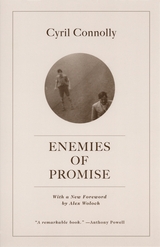 Enemies of Promise
Cyril Connolly
University of Chicago Press, 2008
“Whom the gods wish to destroy,” writes Cyril Connolly, “they first call promising.” First published in 1938 and long out of print, Enemies of Promise, an “inquiry into the problem of how to write a book that lasts ten years,” tests the boundaries of criticism, journalism, and autobiography with the blistering prose that became Connolly’s trademark. Connolly here confronts the evils of domesticity, politics, drink, and advertising as well as novelists such as Joyce, Proust, Hemingway, and Faulkner in essays that remain fresh and penetrating to this day.
“A fine critic, compulsive traveler, and candid autobiographer. . . . [Connolly] lays down the law for all writers who wanted to count. . . . He had imagination and decisive images flashed with the speed of wit in his mind.”—V. S. Pritchett, New York Review of Books
“Anyone who writes, or wants to write, will find something on just about every single page that either endorses a long-held prejudice or outrages, and that makes it a pretty compelling read. . . . You end up muttering back at just about every ornately constructed pensée that Connolly utters, but that’s one of the joys of this book.”—Nick Hornby, The Believer
“A remarkable book.”—Anthony Powell
Enemies of the People: The Destruction of Soviet Literary, Theater, and F
Katherine Bliss Eaton
Northwestern University Press, 2002 "Katherine Eaton has compiled a collection of essays on the destruction of the arts in Russia in the 1930s. The essays provide information about what we know was lost, and speculation about what might have been lost, in the Stalinist Great Purge"
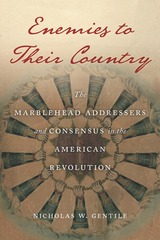 Enemies to Their Country: The Marblehead Addressers and Consensus in the American Revolution
Nicholas W. Gentile
University of Massachusetts Press, 2025 Complicating the American Revolution through a microhistory of one Massachusetts town
In 1774, a group of elite men in the town of Marblehead, Massachusetts, just outside Salem, wrote an address to the royal governor thanking him for his service to the colony, even as town residents began demanding independence from Great Britain. Town meeting records reveal how the town’s patriot majority pressured the signers to withdraw their support for the governor and demanded public recantations and issued damning reports, even forcing some of the signers into exile.
Enemies to Their Country tells the story of the year following the Address, chronicling the town’s struggle to achieve consensus even as the war for American independence started. This microhistory of one vitally important town, the second largest in Massachusetts at the time, with a thriving local economy based on fishing and a robust community of religious and civically engaged citizens, complicates simplistic ideas of the American Revolution. Through compelling stories of neighboring individuals and families, many of which have not been told, it also provides an example of a politically polarized constituency struggling to find consensus at a time of great conflict.
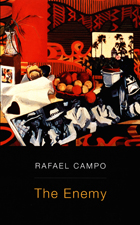 The Enemy
Rafael Campo
Duke University Press, 2007 In his fifth collection of poetry, the physician and award-winning writer Rafael Campo considers what it means to be the enemy in America today. Using the empathetic medium of a poetry grounded in the sentient physical body we all share, he writes of a country endlessly at war—not only against the presumed enemy abroad but also with its own troubled conscience. Yet whether he is addressing the U.S. invasion of Iraq, the battle against the AIDS pandemic, or the culture wars surrounding the issues of feminism and gay marriage, Campo’s compelling poems affirm the notion that hope arises from even the most bitter of conflicts. That hope—manifest here in the Cuban exile’s dream of returning to his homeland, in a dying IV drug user’s wish for humane medical treatment, in a downcast housewife’s desire to express herself meaningfully through art—is that somehow we can be better than ourselves. Through a kaleidoscopic lens of poetic forms, Campo soulfully reveals this greatest of human aspirations as the one sustaining us all.
The Enemy in Italian Renaissance Epic: Images of Hostility from Dante to Tasso
Andrea Moudarres
University of Delaware Press, 2019 In The Enemy in Italian Renaissance Epic, Andrea Moudarres examines influential works from the literary canon of the Italian Renaissance, arguing that hostility consistently arises from within political or religious entities. In Dante’s Divina Commedia, Luigi Pulci’s Morgante, Ludovico Ariosto’s Orlando Furioso, and Torquato Tasso’s Gerusalemme Liberata, enmity is portrayed as internal, taking the form of tyranny, betrayal, and civil discord. Moudarres reads these works in the context of historical and political patterns, demonstrating that there was little distinction between public and private spheres in Renaissance Italy and, thus, little differentiation between personal and political enemies.
Published by University of Delaware Press. Distributed worldwide by Rutgers University Press.
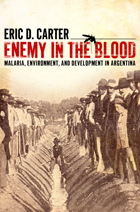 Enemy in the Blood: Malaria, Environment, and Development in Argentina
Eric D. Carter
University of Alabama Press, 2012 Enemy in the Blood: Malaria, Environment, and Development in Argentina examines the dramatic yet mostly forgotten history of malaria control in northwest Argentina. Carter traces the evolution of malaria science and policy in Argentina from the disease’s emergence as a social problem in the 1890s to its effective eradication by 1950. Malaria-control proponents saw the campaign as part of a larger project of constructing a modern identity for Argentina. Insofar as development meant building a more productive, rational, and hygienic society, the perceptions of a culturally backwards and disease-ridden interior prevented Argentina from joining the ranks of “modern” nations. The path to eradication, however, was not easy due to complicated public health politics, inappropriate application of foreign malaria control strategies, and a habitual misreading of the distinctive ecology of malaria in the northwest, especially the unique characteristics of the local mosquito vector. Homegrown scientific expertise, a populist public health agenda, and an infusion of new technologies eventually brought a rapid end to malaria’s scourge, if not the cure for regional underdevelopment.
Enemy in the Blood sheds light on the often neglected history of northwest Argentina’s interior, adds to critical perspectives on the history of development and public health in modern Latin America, and demonstrates the merits of integrative socialenvironmental research.
The Enemy of Good: Estimating the Cost of Waiting for Nearly Perfect Automated Vehicles
Nidhi Kalra
RAND Corporation, 2017 How safe should highly automated vehicles (HAVs) be before they are allowed on the roads for consumer use? In this report, RAND researchers use the RAND Model of Automated Vehicle Safety to compare road fatalities over time under a policy that allows HAVs to be deployed when their safety performance is just moderately better than human drivers and a policy that waits to deploy HAVs only once their performance is nearly perfect.
 The Enemy of the New Man: Homosexuality in Fascist Italy
Lorenzo Benadusi
University of Wisconsin Press, 2012 In this first in-depth historical study of homosexuality in Fascist Italy, Lorenzo Benadusi brings to light immensely important archival documents regarding the sexual politics of the Italian Fascist regime; he adds new insights to the study of the complex relationships of masculinity, sexuality, and Fascism; he explores the connections between new Fascist values and preexisting Italian traditional and Roman Catholic views on morality; he documents both the Fascist regime’s denial of the existence of homosexuality in Italy and its clandestine strategies and motivations for repressing and imprisoning homosexuals; he uncovers the ways that accusations of homosexuality (whether true or false) were used against political and personal enemies; and above all, he shows how homosexuality was deemed the enemy of the Fascist “New Man,” an ideal of a virile warrior and dominating husband vigorously devoted to the “political” function of producing children for the Fascist state.
Benadusi investigates the regulation and regimentation of gender in Fascist Italy, and the extent to which, in uneasy concert with the Catholic Church, the regime engaged in the cultural and legal engineering of masculinity and femininity. He cites a wealth of unpublished documents, official speeches, letters, coerced confessions, private letters and diaries, legal documents, and government memos to reveal and analyze how the orders issued by the regime attempted to protect the “integrity of the Italian race.” For the first time, documents from the Vatican archives illuminate how the Catholic Church dealt with issues related to homosexuality during the Fascist period in Italy.
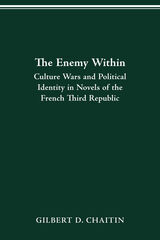 Enemy Within: Culture Wars and Political Identity in Novels of the French Third Republic
Gilbert D. Chaitin
Ohio State University Press, 2008 In The Enemy Within, Gilbert D. Chaitin deepens our understanding of the nature and sources of culture wars during the French Third Republic. The psychological trauma caused by the Ferry educational reform laws of 1880-1882, which strove to create a new national identity based on secular morality rather than God-given commandments, pitted Catholics against proponents of lay education and gave rise to novels by Bourget, Barrès, A. France, and Zola. By deploying Lacanian concepts to understand the “erotics of politics” revealed in these novels, Chaitin examines the formation of national identity, offering a new intellectual history of the period and shedding light on the intimate relations among literature, education, philosophy, morality, and political order. The mechanisms described in The Enemy Within provide fresh insight into the affective structure of culture wars not only in the French Third Republic but elsewhere in the world today.
Enemyship: Democracy and Counter-Revolution in the Early Republic
Jeremy Engels
Michigan State University Press, 2010 The Declaration of Independence is usually celebrated as a radical document that inspired revolution in the English colonies, in France, and elsewhere. In Enemyship, however, Jeremy Engels views the Declaration as a rhetorical strategy that outlined wildly effective arguments justifying revolution against a colonial authority—and then threatened political stability once independence was finally achieved.
Enemyship examines what happened during the latter years of the Revolutionary War and in the immediate post-Revolutionary period, when the rhetorics and energies of revolution began to seem problematic to many wealthy and powerful Americans.
To mitigate this threat, says Engles, the founders of the United States deployed the rhetorics of what he calls "enemyship," calling upon Americans to unite in opposition to their shared national enemies.
 Energizing China: Reconciling Environmental Protection and Economic Growth
Michael B. McElroy, Chris P. Nielsen, and Peter Lydon
Harvard University Press, 1998 As China develops its booming, fossil fuel-powered economy, is it taking lessons from the history of Western industrialization and the unforeseen environmental harms that accompanied it? Given the risks of climate change, is there an imperative, shared responsibility to help China respond to the environmental effects of its coal dependence? By linking global hazards to local air pollution concerns--from indoor stove smoke to burgeoning ground-level ozone--this volume of eighteen studies seeks integrated strategies to address simultaneously a range of harmful emissions. Counterbalancing the scientific inquiry are key chapters on China's unique legal, institutional, political, and cultural factors in effective pollution control.
Energizing China, the stage-setting publication of an ongoing program of Harvard-China research collaboration, is distinguished by its conceptual breadth and spirit of exchange. Its contributors include twenty-two Western and seventeen Chinese scholars with a disciplinary reach that includes science, public health, engineering, economics, public policy, law, business, and China studies.
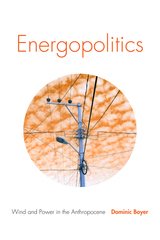 Energopolitics: Wind and Power in the Anthropocene
Dominic Boyer
Duke University Press, 2019 Between 2009 and 2013 Cymene Howe and Dominic Boyer conducted fieldwork in Mexico's Isthmus of Tehuantepec to examine the political, social, and ecological dimensions of moving from fossil fuels to wind power. Their work manifested itself as a new ethnographic form: the duograph—a combination of two single-authored books that draw on shared fieldsites, archives, and encounters that can be productively read together, yet can also stand alone in their analytic ambitions.
In his volume, Energopolitics, Boyer examines the politics of wind power and how it is shaped by myriad factors, from the legacies of settler colonialism and indigenous resistance to state bureaucracy and corporate investment. Drawing on interviews with activists, campesinos, engineers, bureaucrats, politicians, and bankers, Boyer outlines the fundamental impact of energy and fuel on political power. Boyer also demonstrates how large conceptual frameworks cannot adequately explain the fraught and uniquely complicated conditions on the isthmus, illustrating the need to resist narratives of anthropocenic universalism and to attend to local particularities.
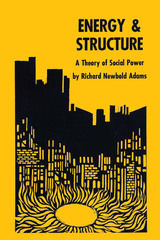 Energy and Structure: A Theory of Social Power
By Richard Newbold Adams
University of Texas Press, 1975 All social structures are essentially power structures dependent on energy. The concept of power and the role of energy in social organization are crucial and timely concerns, especially in light of the current apprehension about future energy resources. In Energy and Structure, Richard N. Adams argues that social power affects humanity's approach to ecological, economic, and political problems, directing people to seek solutions that are often deceptively shortsighted. Adams, an anthropologist, proposes that social power is directly derived from control over energy processes. He identifies how power and mentalistic structures constitute fundamental determinants that shape the lives of people at all stages of cultural development, forcing them to accept alternatives often far removed from their desires. His central thesis is that the amount of power in any system varies with the amount of control exercised over the environment and that increasing power and control lead to increasing centralization of decision-making, social marginalization, and environmental despoliation. Thus the more highly developed societies, by virtue of their greater controls, are responsible for the greater ultimate subordination and destruction of human potential, as humanity combines technological advances with a growing inability to exercise good judgment with respect to our own survival. Energy and Structure begins with an examination of the basic theory of social power—what it is and how it works. Adams defines and differentiates between the concepts of power and control, authority and legitimacy, power domains and levels. He then examines the underlying metatheory of energetic and mentalistic structures and provides an analytic model of the evolution of power, from the primitive band to modern nations. He predicts the emergence of supranational blocs and discusses other future possibilities. Throughout, his theoretical points are solidly supported by examples drawn from a wide range of cultures.
Energy and the Ecological Economics of Sustainability
John Peet
Island Press, 1992 Energy and the Ecological Economics of Sustainability examines the roots of the present environmental crisis in the neoclassical economics upon which modern industrial society is based. The author explains that only when we view ourselves in the larger context of the global ecosystem and accept the physical limits to what is possible can sustainability be achieved.
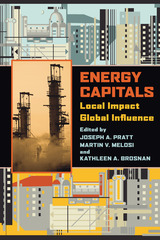 Energy Capitals: Local Impact, Global Influence
Joseph A. Pratt
University of Pittsburgh Press, 2014 Fossil fuels propelled industries and nations into the modern age and continue to powerfully influence economies and politics today. As Energy Capitals demonstrates, the discovery and exploitation of fossil fuels has proven to be a mixed blessing in many of the cities and regions where it has occurred.
With case studies from the United States, Canada, Mexico, Norway, Africa, and Australia, this volume views a range of older and more recent energy capitals, contrasts their evolutions, and explores why some capitals were able to influence global trends in energy production and distribution while others failed to control even their own destinies. Chapters show how local and national politics, social structures, technological advantages, education systems, capital, infrastructure, labor force, supply and demand, and other factors have affected the ability of a region to develop and control its own fossil fuel reserves. The contributors also view the environmental impact of energy industries and demonstrate how, in the depletion of reserves or a shift to new energy sources, regions have or have not been able to recover economically.
The cities of Tampico, Mexico, and Port Gentil, Gabon, have seen their oil deposits exploited by international companies with little or nothing to show in return and at a high cost environmentally. At the opposite extreme, Houston, Texas, has witnessed great economic gain from its oil, natural gas, and petrochemical industries. Its growth, however, has been tempered by the immense strain on infrastructure and the human transformation of the natural environment. In another scenario, Perth, Australia, Calgary, Alberta, and Stavanger, Norway have benefitted as the closest established cities with administrative and financial assets for energy production that was developed hundreds of miles away.
Whether coal, oil, or natural gas, the essays offer important lessons learned over time and future considerations for the best ways to capture the benefits of energy development while limiting the cost to local populations and environments.
Energy Corridor
Glenn Shaheen
University of Pittsburgh Press, 2016 In Energy Corridor, Houston, Texas is the macabre avatar for a nation that has systematically stripped political and economic power from the middle and lower classes. In these poems the speaker wrestles with the guilt and complacency of living in the world's wealthiest nation. It is easy in America to do nothing and suckle the trickling down of the rich, but these poems urge that we have a community responsibility to alter the way we act. Through varied lenses, from Jean-Jacques Rousseau to The Texas Chain Saw Massacre, from Goethe to contemporary electronica, from the 1982 Tylenol Murders to the Stanley Cup, these poems assemble the rhetoric of our cultural landscape into a call to arms. We must change our ways.
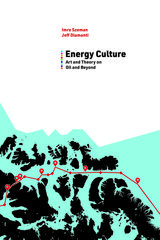 Energy Culture: Art and Theory on Oil and Beyond
Imre Szeman
West Virginia University Press, 2019 Energy Culture is a provocative book about oil’s firm grip on our politics and everyday lives. It brings together essays and artwork produced in a collaborative environment to stimulate new ways of thinking and to achieve a more just and sustainable world. The original work collected in Energy Culture creatively engages energy as a social form through lively arguments and artistic research organized around three vectors of inquiry. The first maps how fossil fuels became, and continue to be, embedded in North American society, from the ideology of tar sands reclamation projects to dreams of fiber optic cables running through the Northwest Passage. The second comprises creative and artistic responses to the dominance of fossil fuels in everyday life and to the challenge of realizing new energy cultures. The final section addresses the conceptual and political challenges posed by energy transition and calls into question established views on energy. Its contributions caution against solar capitalism, explore the politics of sabotage, and imagine an energy efficient transportation system called “the switch.” Imbued with a sense of urgency and hope, Energy Culture exposes the deep imbrications of energy and culture while pointing provocatively to ways of thinking and living otherwise.
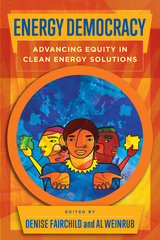 Energy Democracy: Advancing Equity in Clean Energy Solutions
Edited by Denise Fairchild and Al Weinrub
Island Press, 2017 A global energy war is underway. It is man versus nature, fossil fuel versus clean energy, the haves versus the have-nots, and, fundamentally, an extractive economy versus a regenerative economy. The near-unanimous consensus among climate scientists is that the massive burning of gas, oil, and coal is having a cataclysmic impact on our atmosphere and climate, and depleting earth’s natural resources, including its land, food, fresh water and biodiversity.
These climate and environmental impacts are particularly magnified and debilitating for low-income communities and communities of color that live closest to toxic sites, are disproportionately impacted by high incidences of asthma, cancer and rates of morbidity and mortality, and lack the financial resources to build resilience to climate change.
Energy democracy tenders a response and joins the environmental and climate movements with broader movements for social and economic change. Energy democracy is a way to frame the international struggle of working people, low income communities, and communities of color to take control of energy resources from the energy establishment and use those resources to empower their communities—literally providing energy, economically, and politically. Energy democracy is more important than ever as climate and social justice advocates confront a shocking political reality in the U.S.
This volume brings together racial, cultural, and generational perspectives. This diversity is bound together by a common operating frame: that the global fight to save the planet—to conserve and restore our natural resources to be life-sustaining—must fully engage community residents and must change the larger economy to be sustainable, democratic, and just. The contributors offer their perspectives and approaches to climate and clean energy from rural Mississippi, to the South Bronx, to Californian immigrant and refugee communities, to urban and semi-rural communities in the Northeast. Taken together, the contributions in this book show what an alternative, democratized energy future can look like, and will inspire others to take up the struggle to build the energy democracy movement.
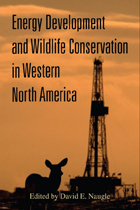 Energy Development and Wildlife Conservation in Western North America
Edited by David E. Naugle
Island Press, 2010 Energy Development and Wildlife Conservation in Western North America offers a road map for securing our energy future while safeguarding our heritage.
Contributors show how science can help craft solutions to conflicts between wildlife and energy development by delineating core areas, identifying landscapes that support viable populations, and forecasting future development scenarios to aid in conservation design. The book - frames the issue and introduces readers to major types of extraction
- quantifies the pace and extent of current and future energy development
- provides an ecological foundation for understanding cumulative impacts on wildlife species
- synthesizes information on the biological response of wildlife to development
- discusses energy infrastructure as a conduit for the spread of invasive species
- compares impacts of alternative energy to those of conventional development
The final section calls for a shift away from site-level management that has failed to mitigate cumulative impacts on wildlife populations toward broad-scale planning and implementation of conservation in priority landscapes. The book concludes by identifying ways that decision makers can remove roadblocks to conservation, and provides a blueprint for implementing conservation plans. Energy Development and Wildlife Conservation in Western North America is a must-have volume for elected officials, industry representatives, natural resource managers, conservation groups, and the public seeking to promote energy independence while at the same time protecting wildlife.
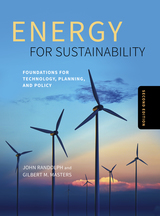 Energy for Sustainability, Second Edition: Foundations for Technology, Planning, and Policy
John Randolph and Gilbert M. Masters
Island Press, 2018 Despite a 2016-18 glut in fossil fuel markets and decade-low fuel prices, the global transformation to sustainable energy is happening. Our ongoing energy challenges and solutions are complex and multidimensional, involving science, technology, design, economics, finance, planning, policy, politics, and social movements. The most comprehensive book on this topic, Energy for Sustainability has been the go-to resource for courses. This new edition has been thoroughly revised and updated to inform and guide students and practitioners who will steer this transformation. Drawing on a combined 80 years of teaching experience, John Randolph and Gilbert Masters take a holistic and interdisciplinary approach. Energy for Sustainability can help techies and policymakers alike understand the mechanisms required to enable conversion to energy that is clean, affordable, and secure. Major revisions to this edition reflect the current changes in technology and energy use and focus on new analyses, data, and methods necessary to understand and actively participate in the transition to sustainable energy. The book begins with energy literacy, including patterns and trends, before covering the fundamentals of energy related to physics, engineering, and economics. The next parts explore energy technologies and opportunities in three important energy sectors: buildings, electricity, and transportation. The final section focuses on policy and planning, presenting the critical role of public policy and consumer and investor choice in transforming energy markets to greater sustainability. Throughout the book, methods for energy and economic analysis and design give readers a quantitative appreciation for and understanding of energy systems. The book uses case studies extensively to demonstrate current experience and illustrate possibilities. Students will gain an understanding of what it takes to achieve clean, affordable, sustainable energy. Supplemental materials are available at www.islandpress.org/energy
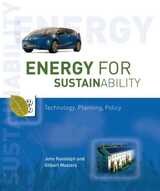 Energy for Sustainability: Technology, Planning, Policy
John Randolph and Gilbert M. Masters
Island Press, 2008 Energy for Sustainability is the first undergraduate textbook on renewable energy and energy efficiency with a unique focus on the community scale. Written by two of the foremost experts in the field, it is a pedagogically complete treatment of energy sources and uses. It examines the full range of issues—from generating technologies to land use planning—in making the transition to sustainable energy.
The book begins by providing a historical perspective on energy use by human civilizations and then covers energy fundamentals and trends; buildings and energy; sustainable electricity; sustainable transportation and land use; and energy policy and planning. Included in these topical areas are in-depth discussions of all of the most promising sources of renewable energy, including solar photovoltaic systems, wind turbines, and biofuels. In addition, the authors offer a thorough presentation of “green” building design, the impact of land use and transportation patterns on energy use, and the policies needed to transform energy markets at the local, state, and national levels. Throughout, the authors first provide the necessary theory and then demonstrate how it can be applied, utilizing cutting-edge practices and technologies, and the most current available data.
Since the dawn of the industrial age, the explosive growth in economic productivity has been fueled by oil, coal, and natural gas. World energy use nearly doubled between 1975 and 2005. China’s energy use has been doubling every decade. The implications for the environment are staggering. One way or another, our reliance on fossil fuels will have to end. Energy for Sustainability evaluates the alternatives and helps students understand how, with good planning and policy decisions, renewable energy and efficiency can support world demands at costs we can afford—economically, environmentally, and socially.
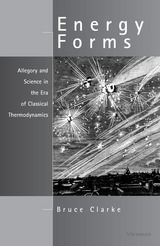 Energy Forms: Allegory and Science in the Era of Classical Thermodynamics
Bruce Clarke
University of Michigan Press, 2001 This book follows the interplay between allegory and physics in Europe from the inception of the laws of thermodynamics in the 1850s to the cultural acceptance of the theory of relativity in the 1920s. Bruce Clarke delves into the cultural poetics of this emergence, as well as using allegory theory to link the literature of that era to the consolidation of modern physics in England. In his examination of these correlating topics the author displays not only an impressive grasp on the scientific climate of that era, but also comprehensive knowledge of late nineteenth- and early twentieth-century literature.
The book begins with an overview of the interconnections between allegory in literature and allegory in science, then analyzes the interaction between energy and entropy and their personification in the literature of the times. Energy Forms draws on the writing of well-known literary and scientific authors including H. G. Wells, Camille Flammarion, Charles Howard Hinton and D. H. Lawrence, among others. The focus then shifts to the broad cultural tension between thermodynamic malaise and electromagnetic aspiration. Energy Forms uncovers the works of important but overlooked authors in the fields of science and literature and will appeal especially to those who are intrigued by interdisciplinary studies.
Bruce Clarke is Professor of English,Texas Tech University. He is the author of Dora Marsden and Early Modernism: Gender, Individualism, Science; Allegories of Writing: The Subject of Metamorphosis; and editor of The Body and the Text: Comparative Essays in Literature and Medicine.
Energy Generation and Efficiency Technologies for Green Residential Buildings
David S-K. Ting
The Institution of Engineering and Technology, 2019 Residential buildings consume about a quarter of all energy (including electrical and thermal) in industrialized countries and emit around 20% of the carbon emissions there. Older and outdated heating and cooling technology causes high energy demand and, depending on building type, secondary causes can include ventilation and lighting. Technology is available to mitigate high energy consumption, and to enable the use of renewable or environmentally friendly energy, partly generated locally.
Energy Harvesting for Wireless Sensing and Flexible Electronics through Hybrid Technologies
Muhammad Iqbal
The Institution of Engineering and Technology, 2023 As wearable microelectronics are becoming ubiquitous, there is a growing interest in replacing batteries with a means of harnessing power from the user's environment via embedded systems. Efforts have been made to prolong the harvester's operational lifetime, overcoming energy dissipation, lowering resonant frequency, attaining multi-resonant states, and widening the operating frequency bandwidth of the biomechanical energy harvesters. Such technological advances mean harvesting energy is a viable solution for sustainably powering wearable electronics for health and wellbeing applications, such as continuous medical health monitoring, remote sensing, and motion tracking.
Energy Harvesting in Wireless Sensor Networks and Internet of Things
Faisal Karim Shaikh
The Institution of Engineering and Technology, 2022 The energy efficiency paradigm associated with Wireless Sensor Networks (WSNs) and the Internet of Things (IoT) is a major bottleneck for the development of related technologies. To overcome this limitation, the design and development of efficient and high-performance energy harvesting systems for WSN and IoT environments are being explored.
 Energy Impacts: A Multidisciplinary Exploration of North American Energy Development
Jeffrey B. Jacquet
University Press of Colorado, 2020 Development of various energy sources continues across North America and around the world, raising questions about social and economic consequences for the places and communities where these activities occur. Energy Impacts brings together important new research on site-level social, economic, and behavioral impacts from large-scale energy development. Featuring conceptual and empirical multidisciplinary research from leading social scientists, the volume collects a broad range of perspectives to understand North America’s current energy uses and future energy needs.
Twelve chapters from respected scholars in a variety of disciplines present new ways to consider and analyze energy impact research. Focused on varied energy topics, geographies, and disciplines, each chapter includes a policy brief that summarizes the work and provides “key takeaways” to apply the findings to policy and public discourse.
Meaningful public engagement is critical in limiting the negative implications of energy development, and understanding the social influences on and of energy systems is a cornerstone of addressing the climate crisis. As such, Energy Impacts is a significant work for students, scholars, and professionals working in sociology, education, geography, environmental studies, and public health.
This material is based upon work supported by the National Science Foundation under Grant No. 1528422. Publication is also supported, in part, by Montana State University.
Contributors:
Ali Adil, Lisa Bailey-Davis, Nancy Bowen-Elizey, Morey Burnham, Weston Eaton, Heather Feldhaus, Felix Fernando, Emily Grubert, C. Clare Hinrichs, John Hintz, Richard Hirsh, Season Hoard, Tamara Laninga, Eric Larson, Achla Marathe, Natalie Martinkus, Seven Mattes, Ronald Meyers, Patrick Miller, Ethan Minier, Myra Moss, Jacob Mowery, Thomas Murphy, Sevda Ozturk Sari, John Parkins, Christopher Podeschi, Nathan Ratledge, Sanne Rijkhoff, Kelli Roemer, Todd Schenk, Anju Seth, Kate Sherren, Jisoo Sim, Marc Stern, Jessica Ulrich-Schad, Cameron Whitley, Laura Zachary
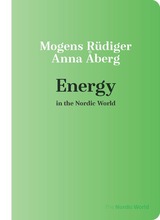 Energy in the Nordic World
Mogens Rüdiger and Anna Åberg
University of Wisconsin Press, 2023 Norway and Sweden are among the biggest consumers of energy per capita, yet the Nordic nations also lead the world in clean power production and have ambitious goals of decarbonizing their energy systems by 2050. Denmark, Norway, Sweden, Finland, and Iceland vary drastically in geography and the availability of natural resources, but each consistently generates electricity from renewable sources at multiple times the average rate of other high-income countries.
Mogens Rüdiger and Anna Åberg present a concise and timely history of energy production, trade, and consumption in Norden, starting with a review of the regional energy mix—from wind, solar, tide and wave, geothermal, biomass, nuclear, coal, and gas sources. Brief chapters describe the diversity of Nordic energy markets, assess how far the green transition has come, and explore what comes next as global crises, domestic politics, and technological developments present novel challenges and opportunities. Energy infrastructures and economic activities, Rüdiger and Åberg argue, serve as unique cultural focal points in the region. The coauthors summarize the national policy frameworks for the sector as well as the key energy and economic indicators used in infrastructure planning, regulation, and the opening of the electricity and gas markets to free competition.
Energy in the Nordic World is the essential primer to the power markets at the heart of Europe’s energy transition.
Energy Management Systems for Microgrids with Wind, PV and Battery Storage
Badre Bossoufi
The Institution of Engineering and Technology, 2025 Growing shares of intermittent clean generation as well as variable loads lead to challenges for distribution systems at all levels. Energy management systems (EMS) are systems of computer-aided tools used by operators of electric utility grids to monitor, control, and optimize the performance of the generation, distribution or transmission system. EMS help to ensure grid stability and power quality, and can also be used in smaller scale systems such as microgrids.
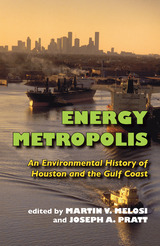 Energy Metropolis: An Environmental History of Houston and the Gulf Coast
Martin V. Melosi
University of Pittsburgh Press, 2007
Houston's meteoric rise from a bayou trading post to the world's leading oil supplier owes much to its geography, geology, and climate: the large natural port of Galveston Bay, the lush subtropical vegetation, the abundance of natural resources. But the attributes that have made it attractive for industry, energy, and urban development have also made it particularly susceptible to a variety of environmental problems. Energy Metropolis presents a comprehensive history of the development of Houston, examining the factors that have facilitated unprecedented growth-and the environmental cost of that development.
The landmark Spindletop strike of 1901 made inexpensive high-grade Texas oil the fuel of choice for ships, industry, and the infant automobile industry. Literally overnight, oil wells sprang up around Houston. In 1914, the opening of the Houston Ship Channel connected the city to the Gulf of Mexico and international trade markets. Oil refineries sprouted up and down the channel, and the petroleum products industry exploded. By the 1920s, Houston also became a leading producer of natural gas, and the economic opportunities and ancillary industries created by the new energy trade led to a population boom. By the end of the twentieth century, Houston had become the fourth largest city in America.
Houston's expansion came at a price, however. Air, water, and land pollution reached hazardous levels as legislators turned a blind eye. Frequent flooding of altered waterways, deforestation, hurricanes, the energy demands of an air-conditioned lifestyle, increased automobile traffic, exponential population growth, and an ever-expanding metropolitan area all escalated the need for massive infrastructure improvements.
The experts in Energy Metropolis examine the steps Houston has taken to overcome laissez-faire politics, indiscriminate expansion, and infrastructural overload. What emerges is a profound analysis of the environmental consequences of large-scale energy production and unchecked growth.
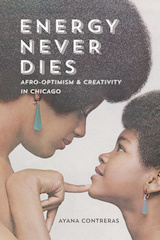 Energy Never Dies: Afro-Optimism and Creativity in Chicago
Ayana Contreras
University of Illinois Press, 2021 From Afro Sheen to Theaster Gates and from Soul Train to Chance the Rapper, Black Chicago draws sustenance from a culture rooted in self-determination, aspiration, and hustle. In Energy Never Dies, Ayana Contreras embarks on a journey to share the implausible success stories and breathtaking achievements of Black Chicago's artists and entrepreneurs. Past and present generations speak with one another, maintaining a vital connection to a beautiful narrative of Black triumph and empowerment that still inspires creativity and pride. Contreras weaves a hidden history from these true stories and the magic released by undervalued cultural artifacts. As she does, the idea that the improbable is always possible emerges as an indestructible Afro-Optimism that binds a people together. Passionate and enlightening, Energy Never Dies uses the power of storytelling to show how optimism and courage fuel the dreams of Black Chicago.
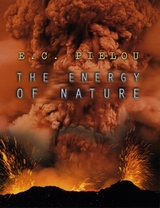 The Energy of Nature
E. C. Pielou
University of Chicago Press, 2001 Energy is crucial for events of every kind, in this world or any other. Without energy, nothing would ever happen. Nothing would move and there would be no life. The sun wouldn't shine, winds wouldn't blow, rivers wouldn't flow, trees wouldn't grow, birds wouldn't fly, and fish wouldn't swim; indeed no material object, living or dead, could even exist. In spite of all this, energy is seldom considered a part of what we call "nature." In The Energy of Nature, E. C. Pielou explores energy's role in nature—how and where it originates, what it does, and what becomes of it. Drawing on a wide range of scientific disciplines, from physics, chemistry, and biology to all the earth sciences, as well as on her own lifelong experience as a naturalist, Pielou opens our eyes to the myriad ways energy and its transfer affect the earth and its inhabitants. Along the way we learn how energy is delivered to the earth from the sun; how it causes weather, winds, and tides; how it shapes the earth through mountain building and erosion; how it is captured and used by living things; how it is stored in chemical bonds; how nuclear energy is released; how it heats the unseen depths of the planet and is explosively revealed in the turmoil of earthquakes and volcanoes; how energy manifests itself in magnetism and electromagnetic waves; how we harness it to fuel human societies; and much more. Filled with fascinating information and and helpful illustrations (hand drawn by the author), The Energy of Nature is fun, readable, and instructive. Science buffs of all ages will be delighted. “A luminous, inquiring, and thoughtful exploration of Earth’s energetics.”—Jocylyn McDowell, Discovery
Energy Optimization and Security in Federated Learning for IoT Environments
Balamurugan Balusamy
The Institution of Engineering and Technology, 2025 Smart environments such as smart homes and industrial automation have been transformed by the rapid developments in internet of things (IoT) devices and systems. However, the widespread use of these devices poses significant difficulties, particularly in settings with limited energy resources. Due to the significant energy consumption and communication overhead associated with delivering huge amounts of data, traditional machine learning algorithms which rely on centralized cloud servers for training are not always suitable.
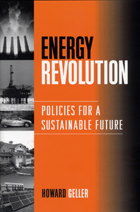 Energy Revolution: Policies For A Sustainable Future
Howard Geller
Island Press, 2002 The transformation from a carbon-based world economy to one based on high efficiency and renewables is a necessary step if human society is to achieve sustainability. But while scientists and researchers have made significant advances in energy efficiency and renewable technologies in recent years, consumers have yet to see dramatic changes in the marketplace—due in large part to government policies and programs that favor the use of fossil fuels. Energy Revolution examines the policy options for mitigating or removing the entrenched advantages held by fossil fuels and speeding the transition to a more sustainable energy future, one based on improved efficiency and a shift to renewable sources such as solar, wind, and bioenergy. The book: - examines today's energy patterns and trends and their consequences
- describes the barriers to a more sustainable energy future and how those barriers can be overcome
- provides ten case studies of integrated strategies that have been effective in different parts of the world
- examines international policies and institutions and recommends ways they could be improved
- reviews global trends that suggest that the transition to renewables and increased efficiency is underway and is achievable
Energy policy represents a linchpin for achieving a broader transition to a more sustainable economy. Energy Revolution offers a unique focus on policies and programs, and on the lessons provided by recent experience. It represents a key statement of the available options for reforming energy policy that have proven to be successful, and is an essential work for policymakers, researchers, and anyone concerned with energy and sustainability issues.
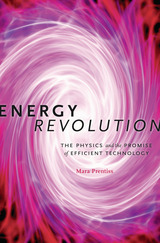 Energy Revolution: The Physics and the Promise of Efficient Technology
Mara Prentiss
Harvard University Press, 2015 Energy can be neither created nor destroyed—but it can be wasted. The United States wastes two-thirds of its energy, including 80 percent of the energy used in transportation. So the nation has a tremendous opportunity to develop a sensible energy policy based on benefits and costs. But to do that we need facts—not hyperbole, not wishful thinking. Mara Prentiss presents and interprets political and technical information from government reports and press releases, as well as fundamental scientific laws, to advance a bold claim: wind and solar power could generate 100 percent of the United States’ average total energy demand for the foreseeable future, even without waste reduction.
To meet the actual rather than the average demand, significant technological and political hurdles must be overcome. Still, a U.S. energy economy based entirely on wind, solar, hydroelectricity, and biofuels is within reach. The transition to renewables will benefit from new technologies that decrease energy consumption without lifestyle sacrifices, including energy optimization from interconnected smart devices and waste reduction from use of LED lights, regenerative brakes, and electric cars. Many countries cannot obtain sufficient renewable energy within their borders, Prentiss notes, but U.S. conversion to a 100 percent renewable energy economy would, by itself, significantly reduce the global impact of fossil fuel consumption.
Enhanced by full-color visualizations of key concepts and data, Energy Revolution answers one of the century’s most crucial questions: How can we get smarter about producing and distributing, using and conserving, energy?
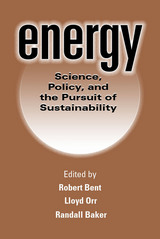 Energy: Science, Policy, and the Pursuit of Sustainability
Edited by Robert Bent, Lloyd Orr, and Randall Baker
Island Press, 2002 In the early 2000s, energy prices have fluctuated wildly, from historic highs in the winter and spring of 2001 to the lowest wholesale prices in decades a few short months later. As the largest user of fossil-fuel energy, the United States is the key player in the world's energy markets, and our nation's energy policy (or lack thereof) has become a subject of increasing concern. Energy: Science, Policy, and the Pursuit of Sustainability is an essential primer on energy, society, and the environment. It offers an accessible introduction to the "energy problem" -- its definition, analysis, and policy implications. Current patterns of energy use are without question unsustainable over the long term, and our dependence on fossil fuels raises crucial questions of security and self-sufficiency. This volume addresses those questions by examining the three broad dimensions of the issue: physical, human, and political-economic. Chapters consider: - the laws of nature and the impacts of energy use on our physical and ecological life-support systems
- the psychological, social, and cultural factors that determine how we use energy
- the role of government actions in adjusting costs, influencing resource consumption, and protecting the environment
- how markets work, and the reasons and cures for market failures in responding to long-term environmental and energy problems
Energy links energy use with key environmental issues of population, consumption, and pollution and offers readers a range of material needed for an informed policy perspective.
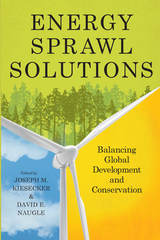 Energy Sprawl Solutions: Balancing Global Development and Conservation
Edited by Joseph M. Kiesecker and David E. Naugle
Island Press, 2017 Over the next several decades, as human populations grow and developing countries become more affluent, the demand for energy will soar. Parts of the energy sector are preparing to meet this demand by increasing renewable energy production, which is necessary to combat climate change. But many renewable energy sources have a large energy sprawl—the amount of land needed to produce energy—which can threaten biodiversity and conservation. Is it possible to meet this rise in energy demand, while still conserving natural places and species?
In Energy Sprawl Solutions, scientists Joseph M. Kiesecker and David Naugle provide a roadmap for preserving biodiversity despite the threats of energy sprawl. Their strategy—development by design—brings together companies, communities, and governments to craft blueprints for sustainable land development. This commonsense approach identifies and preemptively sets aside land where biodiversity can thrive while consolidating development in areas with lower biodiversity value. This approach makes sense for energy industries and governments, which can confidently build sustainability into their energy futures.
This contributed volume brings together experts in diverse fields such as biodiversity conservation, ecology, ecosystem services, wildlife, fisheries, planning, energy, economics, and finance. Early chapters set the context for global patterns of biodiversity risk from energy extraction and the challenges of achieving a green future while maintaining energy security. Middle chapters are devoted to case studies from countries around the world, each describing a different energy sector and the collaborative process involved in planning complex energy projects in a way that maximizes biodiversity protection. Detailed maps and charts help orient readers to countries and energy sectors, providing proof for what is possible.
With biodiversity declining rapidly because of an energy-hungry world, this book provides a needed guide for elected officials, industry representatives, NGOs and community groups who have a stake in sustainable energy-development planning.
Energy Storage at Different Voltage Levels: Technology, integration, and market aspects
Ahmed F. Zobaa
The Institution of Engineering and Technology, 2018 In an era of increasing contributions from intermittent renewable resources, energy storage is becoming more important to ensure a resilient and reliable electricity supply. Energy Storage at Different Voltage Levels presents the technology, integration and market aspects of energy storage in the various generation, transmission, distribution, and customer levels of the grid.
Energy Storage for Power Systems
Andrei G. Ter-Gazarian
The Institution of Engineering and Technology, 1994 Energy flow from many primary sources is not constant but depends on the season, time of day and weather conditions. Energy demand also varies with the same circumstances, but generally in reverse. Obviously there needs to be some way for energy suppliers to separate the processes of energy generation and consumption, by storing energy until it is needed.
 Energy Storage for Power Systems
A.G. Ter-Gazarian
The Institution of Engineering and Technology, 2011 The supply of energy from primary sources is not constant and rarely matches the pattern of demand from consumers. Electricity is also difficult to store in significant quantities. Therefore, secondary storage of energy is essential to increase generation capacity efficiency and to allow more substantial use of renewable energy sources that only provide energy intermittently. Lack of effective storage has often been cited as a major hurdle to substantial introduction of renewable energy sources into the electricity supply network. The author presents here a comprehensive guide to the different types of storage available. He not only shows how the use of the various types of storage can benefit the management of a power supply system, but also considers more substantial possibilities that arise from integrating a combination of different storage devices into a system. This book will be important to those seeking to develop environmentally sound energy resources.
Energy Storage for Power Systems
Andrei G. Ter-Gazarian
The Institution of Engineering and Technology, 2020 Unregulated distributed energy sources such as solar roofs and windmills and electric vehicle requirements for intermittent battery charging are variable sources either of electricity generation or demand. These sources impose additional intermittent load on conventional electric power systems. As a result thermal power plants whose generation is absolutely essential for any power system are increasingly being used for cycling operations thus increasing greenhouse gas emissions and electricity cost. The use of secondary energy storage might be a solution. Various technologies for storing electric energy are available; besides electrochemical ones such as batteries, there are mechanical, chemical and thermal means, all with their own advantages and disadvantages regarding scale, efficiency, cost, and other parameters.
Energy Systems for Electric and Hybrid Vehicles
K.T. Chau
The Institution of Engineering and Technology, 2016 Electric and hybrid vehicles have been globally identified to be the most environmental friendly road transportation. Energy Systems for Electric and Hybrid Vehicles provides comprehensive coverage of the three main energy system technologies of these vehicles - energy sources, battery charging and vehicle-to-grid systems.
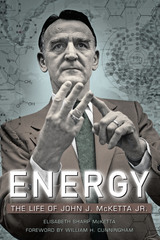 Energy: The Life of John J. McKetta Jr.
By Elisabeth Sharp McKetta, Foreword by William H. Cunningham
University of Texas Press, 2017 Energy recounts the life of Dr. John J. McKetta Jr., a first-generation Ukrainian American coal miner who worked his way up from the mines to become the world’s foremost energy expert, a university dean, an encyclopedia editor, and one of the most widely known and respected professors in his field. To honor his one hundredth birthday in 2015, thousands of his former students raised more than $25 million to celebrate his contributions to their lives and to chemical engineering at the University of Texas at Austin, which rechristened his home department the John J. McKetta Jr. Department of Chemical Engineering. In this biography, granddaughter Elisabeth Sharp McKetta retraces Dr. McKetta’s path to becoming the godfather of modern chemical engineering. She describes how he dedicated his life to supporting students throughout their careers, becoming legendary for phoning scores of them on their birthdays every year, while also showing Americans how to produce and use energy efficiently. John J. McKetta Jr.’s fascinating story has been the subject of hundreds of articles and interviews, and now Energy is the first full-length book about his remarkable life.
Energy: The Worlds Race for Resources in the 21st Century
Hermann-Josef Wagner
Haus Publishing, 2009 The future of our energy supplies is an explosive topic. Unprecedented global population growth means that energy consumption will certainly continue to increase dramatically, and the worldwide political structures will be reordered. Finding alternative energy sources to avoid a climate catastrophe is a major priority for the 21st century.
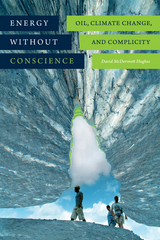 Energy without Conscience: Oil, Climate Change, and Complicity
David McDermott Hughes
Duke University Press, 2017 In Energy without Conscience David McDermott Hughes investigates why climate change has yet to be seen as a moral issue. He examines the forces that render the use of fossil fuels ordinary and therefore exempt from ethical evaluation. Hughes centers his analysis on Trinidad and Tobago, which is the world's oldest petro-state, having drilled the first continuously producing oil well in 1866. Marrying historical research with interviews with Trinidadian petroleum scientists, policymakers, technicians, and managers, he draws parallels between Trinidad's eighteenth- and nineteenth-century slave labor energy economy and its contemporary oil industry. Hughes shows how both forms of energy rely upon a complicity that absolves producers and consumers from acknowledging the immoral nature of each. He passionately argues that like slavery, producing oil is a moral choice and that oil is at its most dangerous when it is accepted as an ordinary part of everyday life. Only by rejecting arguments that oil is economically, politically, and technologically necessary, and by acknowledging our complicity in an immoral system, can we stem the damage being done to the planet.
The Energy-Environment Connection
Edited by Jack M. Hollander; Foreword by The Reverend Theodore M. Hesburgh
Island Press, 1992 Society currently faces critical and unprecedented decisions involving energy supply, use, and regulation. The Energy-Environment Connection brings together leading scientists and policy analysts to provide the latest thinking on all aspects of the vital connection between energy and the environment. Its goal is to help citizens and leaders find ways to balance the costs and benefits of energy within the context of global sustainability.
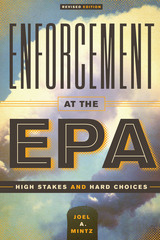 Enforcement at the EPA: High Stakes and Hard Choices, Revised Edition
By Joel A. Mintz
University of Texas Press, 2012 The only published work that treats the historical evolution of EPA enforcement, this book provides a candid inside glimpse of a crucial aspect of the work of an important federal agency. Based on 190 personal interviews with present and former enforcement officials at EPA, the U.S. Department of Justice, and key congressional staff members—along with extensive research among EPA documents and secondary sources—the book vividly recounts the often tumultuous history of EPA’s enforcement program. It also analyzes some important questions regarding EPA’s institutional relationships and the Agency’s working environment. This revised and updated edition adds substantial new chapters examining EPA enforcement during the Clinton and George W. Bush administrations. Its treatment of issues of civil service decline and the applicability of captive agency theory is also new and original.
 The Enforcement of English Apprenticeship: A Study in Applied Mercantilism, 1563-1642
Margaret Gay Davies
Harvard University Press The problem this book is concerned with is the compulsory apprenticeship of seven years required by the Statute of Artificers of 1563 for entry to existing crafts and retail trades. This statute was the most comprehensive expression of the internal policy of English mercantilism, and it initiated national regulation of apprenticeship that was uniform for town and country.
As a result of her penetrating study, Margaret Gay Davies establishes the predominance of private agencies and interests over public ones in enforcement, especially in the case of the common informer—accepted during the Elizabethan and Stuart periods as a normal and necessary instrument. Davies shows the consistent inattention of county authorities and of the central government to the apprenticeship requirements of the Act of 1563, central though these were to internal regulation of economic life.
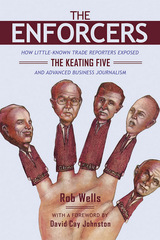 The Enforcers: How Little-Known Trade Reporters Exposed the Keating Five and Advanced Business Journalism
Rob Wells with a foreword by David Cay Johnston
University of Illinois Press, 2019 In the 1980s, real estate developer and banker Charles H. Keating executed one of the largest savings and loans frauds in United States history. Keating had long used the courts to muzzle critical reporting of his business dealings, but aggressive reporting by a small trade paper called the National Thrift News helped bring down Keating and offered an inspiring example of business journalism that speaks truth to power. Rob Wells tells the story through the work of Stan Strachan, a veteran financial journalist who uncovered Keating's misdeeds and links to a group of US senators—the Keating Five—who bullied regulators on his behalf. Editorial decisions at the National Thrift News angered advertisers and readers, but the newsroom sold ownership on the idea of investigative reporting as a commercial opportunity. Examining the National Thrift News's approach, Wells calls for a new era of business reporting that can—and must—embrace its potential as a watchdog safeguarding the interests of the public.
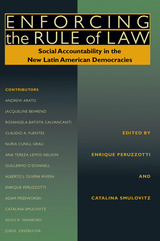 Enforcing the Rule of Law: Social Accountability in the New Latin American Democracies
Enrique Peruzzotti
University of Pittsburgh Press, 2006
Reports of scandal and corruption have led to the downfall of numerous political leaders in Latin America in recent years. What conditions have developed that allow for the exposure of wrongdoing and the accountability of leaders? Enforcing the Rule of Law examines how elected officials in Latin American democracies have come under scrutiny from new forms of political control, and how these social accountability mechanisms have been successful in counteracting corruption and the limitations of established institutions.
This volume reveals how legal claims, media interventions, civic organizations, citizen committees, electoral observation panels, and other watchdog groups have become effective tools for monitoring political authorities. Their actions have been instrumental in exposing government crime, bringing new issues to the public agenda, and influencing or even reversing policy decisions.
Enforcing the Rule of Law presents compelling accounts of the emergence of civic action movements and their increasing political influence in Latin America, and sheds new light on the state of democracy in the region.
Engaged Anthropology: Research Essays on North American Archaeology, Ethnobotany, and Museology
Edited by Michelle Hegmon and B. Sunday Eiselt
University of Michigan Press, 2005 This collection of essays is based on the 2005 Society for American Archaeology symposium and presents research that epitomizes Richard I. Ford’s approach of engaged anthropology. This transdisciplinary approach integrates archaeological research with perspectives from ethnography, history, and ecology, and engages the anthropologist with Native partners and with socio-natural landscapes. Research papers largely focus on the U.S. Southwest, but also consider other areas of North America, issues related to museums collections, and indigenous approaches to materials research.
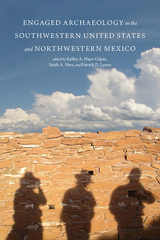 Engaged Archaeology in the Southwestern United States and Northwestern Mexico
Kelley A. Hays-Gilpin
University Press of Colorado, 2021 This volume of proceedings from the fifteenth biennial Southwest Symposium makes the case for engaged archaeology, an approach that considers scientific data and traditional Indigenous knowledge alongside archaeological theories and methodologies. Focusing on the southwestern United States and northwestern Mexico, the contributors show what can be gained when archaeologists engage with Indigenous communities and natural scientists: improved contemporary archaeological practice through better understandings of heritage and identity, anthropogenic landscapes, and societal potential for resilience.
Organized around the theme of interdisciplinary perspectives, the book highlights collaborations with those who have other ways of knowing the past, from the traditional and proprietary knowledge of communities to new scientific methods, and considers the social context of archaeological practice and the modern relationships that inform interpretations of the past. Chapters show how cutting-edge practices lead to new archaeological understandings when archaeologists work in partnership with descendant and stakeholder communities and across international and disciplinary borders. Authors work across anthropological subfields and with the sciences, demonstrating that anthropological archaeology’s methods are starting points for investigation that allow for the expansion of understanding by incorporating long-remembered histories with innovative analytic methods.
Engaged Archaeology in the Southwestern United States and Northwestern Mexico identifies current and near-future trends in archaeological practice in the US Southwest and northwestern Mexico, including repatriation, community engagement, and cross-disciplinary approaches, and focuses on Native American archaeologists and their communities, research, collaborations, and interests. It will be of interest to archaeologists and anthropologists working in the Southwest and to any researchers interested in interdisciplinary approaches to archaeology, heritage studies, and the natural sciences.
Contributors: Christopher Caseldine, Chip Colwell, Guillermo Córdova Tello, Patrick Cruz, T. J. Ferguson, Cécile R. Ganteaume, Vernelda Grant, Neysa Grider-Potter, Christopher Grivas, Michael Heilen, Jane H. Hill, Leigh J. Kuwanwisiwma, Teresita Majewski, Debra L. Martin, Estela Martínez Mora, John A. McClelland, Emiliano Ricardo Melgar Tísoc, Darsita R. North, Scott Ortman, Peter J. Pilles Jr., Susan Sekaquaptewa, Arleyn W. Simon, Kimberly Spurr, Sarah Striker, Kerry F. Thompson, John A. Ware, Peter M. Whiteley, Lisa C. Young
Engaged Humanities: Rethinking Art, Culture, and Public Life
Aagje Swinnen
Amsterdam University Press, 2022 What is the role of the humanities at the start of 21st century? In the last few decades, the various disciplines of the humanities (history, linguistics, literary studies, art history, media studies) have encountered a broad range of challenges, related to the future of print culture, to shifts in funding strategies, and to the changing contours of culture and society. Several publications have addressed these challenges as well as potential responses on a theoretical level. This coedited volume opts for a different strategy and presents accessible case studies that demonstrate what humanities scholars contribute to concrete and pressing social debates about topics including adoption, dementia, hacking, and conservation. These “engaged” forms of humanities research reveal the continued importance of thinking and rethinking the nature of art, culture, and public life.
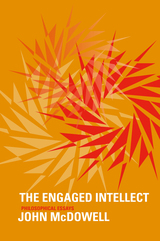 The Engaged Intellect: Philosophical Essays
John McDowell
Harvard University Press, 2013 The Engaged Intellect collects important essays of John McDowell. Each involves a sustained engagement with the views of an important philosopher and is characterized by a modesty that is partly temperamental and partly methodological. It is typical of McDowell to represent his own best insights either as already to be found in the writings of his heroes (Aristotle, Wittgenstein, Gadamer, and Sellars) or as inevitably emerging from a charitable modification of the views of those (such as Anscombe, Sellars, Davidson, Evans, Rorty, Dreyfus, and Brandom) subjected here to criticism. McDowell therefore develops his own philosophical picture in these pages through a method of indirection. The method is one of intervening in a philosophical dialectic at a characteristic juncture—in which it is difficult to avoid the feeling that further progress is required. McDowell shows how progress is to be achieved by preserving what is most attractive in the views of those he is in conversation with, while whittling away their weaknesses. As he practices this method, what emerges through the volume is the unity of McDowell’s own views. The combination of philosophical breadth with dialectical depth—of intricate argumentative detail with overall philosophical coherence—marks McDowell as one of the most compelling philosophers of our time.
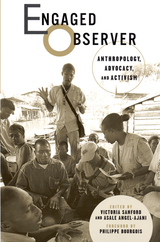 Engaged Observer: Anthropology, Advocacy, and Activism
Sanford, Victoria
Rutgers University Press, 2006 Anthropology has long been associated with an ethos of “engagement.” The field’s core methods and practices involve long-term interpersonal contact between researchers and their study participants, giving major research topics in the field a distinctively human face. Can research findings be authentic and objective? Are anthropologists able to use their data to aid the participants of their study, and is that aid always welcome?
In Engaged Observer, Victoria Sanford and Asale Angel-Ajani bring together an international array of scholars who have been embedded in some of the most conflict-ridden and dangerous zones in the world to reflect on the role and responsibility of anthropological inquiry. They explore issues of truth and objectivity, the role of the academic, the politics of memory, and the impact of race, gender, and social position on the research process. Through ethnographic case studies, they offer models for conducting engaged research and illustrate the contradictions and challenges of doing so.
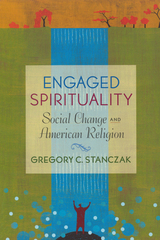 Engaged Spirituality: Social Change and American Religion
Stanczak, Gregory C
Rutgers University Press, 2006 In Engaged Spirituality, Gregory C. Stanczak challenges this assumption, arguing that spirituality plays an important social role as well. Based on more than one hundred interviews with individuals of diverse faith traditions, the book shows how prayer, meditation, and ritual provide foundations for activism. Among the stories, a Buddhist monk in Los Angeles intimately describes the physical sensations of strength and compassion that sweep her body when she recites the Buddha’s name in times of selfless service, and a Protestant reverend explains how the calm serenity that she feels during retreats allows her to direct her multi-service agency in San Francisco to creative successes that were previously unimaginable.
In an age when Madonna studies Kabbalah and the internet is bringing Buddhism to the white middle-class, it is clear that formal religious affiliations are no longer enough. Stanczak’s critical examination of spirituality provides us with a way of discussing the factors that impel individuals into social activism and forces us to rethink the question of how “religion” and “spirituality” might be defined.
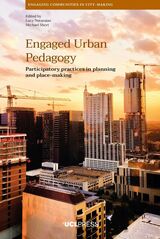 Engaged Urban Pedagogy: Participatory Practices in Planning and Place-Making
Edited by Lucy Natarajan and Michael Short
University College London, 2023 A practical handbook for teaching about the built environment.
Engaged Urban Pedagogy presents a participatory approach to teaching about the built environment by exploring twelve examples of real-world engagement in urban planning involving people within, and beyond, the university. Starting with curriculum review, course content is analyzed in light of urban pasts, race, queer identity, lived experiences, and the concerns of urban professionals. Case studies then shift to focus on techniques for participatory critical pedagogy, including expanding the classroom with links to live place-making processes, connections made through digital co-design exercises, and student-led podcasting assignments. Finally, the book turns to activities beyond formal university teaching, such as those where school-age children learn about their own participation in urban processes together alongside university students and researchers. Drawing on foundational works of critical pedagogy, the contributors present a distinctly urban praxis that will help those in universities respond to the built environment challenges of today.
 Engagement, Enlargement, and Confrontation: A Political History of the European Union’s Eastern Policies after the Cold War
Graham Timmins
Central European University Press Engagement, Enlargement, and Confrontation provides a holistic view of the European Union’s eastern relations explored in an historical context following the end of the Cold War. The author draws out the key achievements and failures of this strategic exercise. The focus is on the institutional adaptation of the European Union as well as on the dynamics of its policies towards the East. Graham Timmins identifies four interconnected factors which have shaped the development of the EU’s policies towards its eastern neighbours; the projection of the EU’s identity as an agent of peace and stability, the maintenance of internal stability within the Union, the coordination of Member State foreign policies, and the EU’s relations with Russia. The book explores the key challenges faced by the European Union in terms of the EU’s eastern policies. These include capacity building, the management of expectations in the eastern neighbourhood, the reconciliation of national perspectives and agendas with wider EU strategic thinking, and last but not least the handling of the relationship with Russia. The general conclusion of the study is that the EU’s internal development in respect to its relationship with its eastern members and neighbours is likely to remain complex and unpredictable.
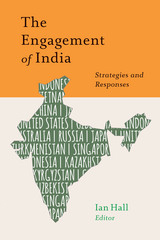 The Engagement of India: Strategies and Responses
Ian Hall, Editor
Georgetown University Press, 2014 As India emerges as a significant global actor, diverse states have sought to engage India with divergent agendas and interests. Some states aspire to improve their relations with New Delhi, while others pursue the transformation of Indian foreign policy—and even India itself—to suit their interests. The Engagement of India explores the strategies that key states have employed to engage and shape the relationship with a rising and newly vibrant India, their successes and failures, and Indian responses—positive, ambivalent, and sometimes hostile—to engagement. A multinational team of contributors examine the ways in which Australia, China, Japan, Russia, and the United States have each sought to engage India for various purposes, explore the ways in which India has responded, and assess India’s own strategies to engage with Singapore, Vietnam, Indonesia, and the Central Asian republics. This informative analysis of the foreign relations of a key rising power, and first comparative study of engagement strategies, casts light on the changing nature of Indian foreign policy and the processes that shape its future. The Engagement of India should be of interest to students and scholars of international relations, diplomacy, and South Asia.
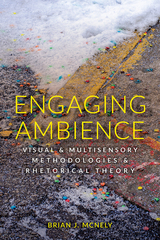 Engaging Ambience: Visual and Multisensory Methodologies and Rhetorical Theory
Brian McNely
Utah State University Press, 2024 Engaging Ambience is an in-depth exploration of contemporary rhetorical theory, drawing from rich traditions of visual and sensory research. It is the first book to develop comprehensive empirical approaches to ambient rhetoric and the first to offer systematic approaches to visual research in studies of rhetoric and writing. These approaches address the complexities of everyday life and offer practical advice for understanding the factors that shape individuals and communities, how they understand one another, and the kind of world they envision.
By articulating theoretically sound methodologies and methods for the empirical study of rhetoric conceived as originary, immanent, and enveloping, Brian McNely contributes a methodological perspective that furthers new materialist theories of rhetoric. McNely demonstrates how scholars’ emergent theories of rhetoric call for new methodologies that can extend their reach, and in the process, he proposes a new conception of visual rhetoric. Engaging Ambience delineates methodologies and methods that help researchers in rhetoric and writing studies discover the ambient environments that condition and support everyday communication in all its forms.
Engaging Ambiencedetails and demonstrates visual and multisensory methodologies and methods for exploring the wondrous complexity of everyday communication. It will appeal to scholars and students of rhetorical theory, visual and multisensory rhetorics, and composition and writing studies.
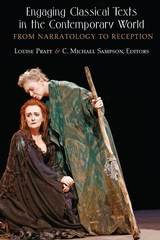 Engaging Classical Texts in the Contemporary World: From Narratology to Reception
Louise Pratt and C. Michael Sampson, Editors
University of Michigan Press, 2018 Contemporary classicists often find themselves advocating for the value and relevance of Greco-Roman literature and culture, whether in the classroom, or social media, or newsprint and magazines. In this collection, twelve top scholars apply major critical approaches from other academic fields to open new channels for dialogue between ancient texts and the contemporary world.
This volume considers perennial favorites of classical literature—the Iliad and Odyssey, Greek tragedy, Roman comedy, the Argonautica, and Ovid’s Metamorphoses—and their influence on popular entertainment from Shakespeare’s plays to Hollywood’s toga films. It also engages with unusual and intriguing texts across the centuries, including a curious group of epigrams by Artemidorus found on the island sanctuary of Thera, mysterious fragments of two Aeschylean tragedies, and modern-day North African novels. These essays engage an array of theoretical approaches from other fields—narratology, cognitive literary theory, feminist theory, New Historicist approaches to gender and sexuality, and politeness theory—without forsaking more traditional philological methods. A new look at hospitality in the Argonautica shows its roots in the changed historical circumstances of the Hellenistic world. The doubleness of Helen and her phantom in Euripides’ Helen is even more complex than previously noted. Particularly illuminating is the recurrent application of reception studies, yielding new takes on the ancient reception of Homer by Apollonius and of Aeschylus by Macrobius, the reception of Plautus by Shakespeare, and more contemporary examples from the worlds of cinema and literature.
Students and scholars of classics will find much in these new interpretations and approaches to familiar texts that will expand their intellectual horizons. Specialists in other fields, particularly English, comparative literature, film studies, and gender and sexuality studies, will also find these essays directly relevant to their work.
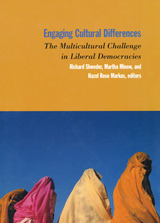 Engaging Cultural Differences: The Multicultural Challenge in Liberal Democracies
Richard A., Shweder
Russell Sage Foundation, 2002 Liberal democracies are based on principles of inclusion and tolerance. But how does the principle of tolerance work in practice in countries such as Germany, France, India, South Africa, and the United States, where an increasingly wide range of cultural groups holds often contradictory beliefs about appropriate social and family life practices? As these democracies expand to include peoples of vastly different cultural backgrounds, the limits of tolerance are being tested as never before. Engaging Cultural Differences explores how liberal democracies respond socially and legally to differences in the cultural and religious practices of their minority groups. Building on such examples, the contributors examine the role of tolerance in practical encounters between state officials and immigrants, and between members of longstanding majority groups and increasing numbers of minority groups. The volume also considers the theoretical implications of expanding the realm of tolerance. Some contributors are reluctant to broaden the scope of tolerance, while others insist that the notion of "tolerance" is itself potentially confining and demeaning and that modern nations should aspire to celebrate cultural differences. Coming to terms with ethnic diversity and cultural differences has become a major public policy concern in contemporary liberal democracies, as they struggle to adjust to burgeoning immigrant populations. Engaging Cultural Differences provides a compelling examination of the challenges of multiculturalism and reveals a deep understanding of the challenges democracies face as they seek to accommodate their citizens' diverse beliefs and practices.
 Engaging Diverse Communities: A Guide to Museum Public Relations
Melissa A. Johnson
University of Massachusetts Press, 2020 As U.S. museums evolve from their role as elite institutions to organizations serving multiple stakeholders, they must adopt new communication practices to meet their social missions and organizational goals. Engaging Diverse Communities, the first book-length study of museum public relations for practitioners since 1983, details how institutions can use communication fundamentals to establish and maintain relationships with a wide range of cultural groups and constituencies.
Melissa A. Johnson interviews communicators at cultural heritage museums to understand the challenges of representing communities based on racial and ethnic, generational, immigrant, and language identities. Exploring how communications professionals function as cultural intermediaries by negotiating competing and intersecting identities and mastering linguistic and visual code-switching, she presents an analysis of the communication tactics of more than two hundred art, history, African American, American Indian, and other diverse museums. Engaging Diverse Communities illuminates best public relations practices, especially in media relations, digital press relations, website content production, social media, and event planning. This essential text for museum professionals also addresses visual aesthetics, cultural expression, and counter-stereotypes, and offers guidance on how to communicate cultural attractiveness.
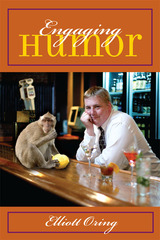 Engaging Humor
Elliott Oring
University of Illinois Press, 2002 Exploring the structure, motives, and meanings of humor in everyday life In Engaging Humor, Elliott Oring asks essential questions concerning humorous expression in contemporary society, examining how humor works, why it is employed, and what its messages might be. This provocative book is filled with examples of jokes and riddles that reveal humor to be a meaningful--even significant--form of expression. Oring scrutinizes classic Jewish jokes, frontier humor, racist cartoons, blonde jokes, and Internet humor. He provides alternate ways of thinking about humorous expressions by examining their contexts--not just their contents. He also shows how the incongruity and absurdity essential to the production of laughter can serve serious communicative ends. Engaging Humor examines the thoughts that underlie jokes, the question of racist motivation in ethnic humor, and the use of humor as a commentary on social interaction. The book also explores the relationship between humor and sentimentality and the role of humor in forging national identity. Engaging Humor demonstrates that when analyzed contextually and comparatively, humorous expressions emerge as communications that are startling, intriguing, and profound.
Engaging Modernity: Asante in the Twenty-First Century
Kwasi Ampene. Nana Kwadwo Nyantakyi III
Michigan Publishing, 2016 Engaging Modernity is the definitive history of Asante royal regalia and music ensembles. This second edition includes an ethnographical account of the 2014 Asanteman Grand Adae festival that prominently features the complex heritage of the visual and the performing arts in motion. Ampene’s contextual account illuminates the historical narratives the regalia objects render as they move through space and time, as well as the metalanguage embodied in the objects and the symbolic language they convey in Akanland. The book combines text with over three hundred color photographs to construct subtle and nuanced views of the material culture associated with Asante royal court in the twenty-first century. Engaging Modernity is an essential and a vast transdisciplinary resource for the humanities and beyond.
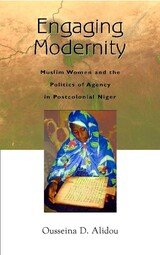 Engaging Modernity: Muslim Women and the Politics of Agency in Postcolonial Niger
Ousseina Alidou
University of Wisconsin Press, 2005 Engaging Modernity is Ousseina Alidou’s rich and compelling portrait of Muslim women in Niger as they confront the challenges and opportunities of the twentieth century. Contrary to Western stereotypes of passive subordination, these women are taking control of their own lives and resisting domination from indigenous traditions, westernization, and Islam alike.
Based on thorough scholarly research and extensive fieldwork—including a wealth of interviews—Alidou’s work offers insights into the meaning of modernity for Muslim women in Niger. Mixing biography with sociological data, social theory and linguistic analysis, this is a multilayered vision of political Islam, education, popular culture, and war and its aftermath. A gripping look at one of the Muslim world’s most powerful untold stories.
Runner-up for the Aidoo-Snyder Book Prize, Women’s Caucus of the African Studies Association
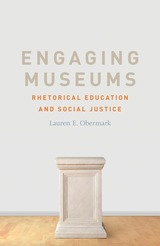 Engaging Museums: Rhetorical Education and Social Justice
Lauren E. Obermark
Southern Illinois University Press, 2022 Examining rhetorical engagement with difficult topics
Museums offer an opportunity to reenvision rhetorical education through their address of hard, discomforting histories that challenge visitors to confront traumatic events and work toward a better future. While both museum studies and rhetoric center the audience in their scholarship and practices, this volume engages across and between these disciplines, allowing for a fuller theorization and enactment of rhetorical education’s connections to social justice. Engaging Museums works to fill gaps between the fields of rhetoric and social justice by going beyond classrooms to sites of public memory represented in museums.
This volume presents three distinct, diverse case studies of recently established historical museums taking on the rhetorically complex tasks of representing traumatic events: the National Underground Railroad Freedom Center, the National World War I Museum, and the Oklahoma City National Memorial Museum. Through rhetorical and comparative analysis of data collected from the museums and intersectional transdisciplinary frameworks, each chapter theorizes aspects of rhetoric—namely identification, collectivity, and memory—bringing rhetorical theory more firmly into current conversations surrounding civic engagement and social justice.
Obermark’s weave of voices and perspectives concludes with a critical focus on how memory may serve as a generative pedagogical topos for both public rhetoric and university-based rhetoric and writing classrooms. This book helps scholars, students, and teachers bring what museums do—difficult, complicated pedagogical work representing hard history—back inside the classroom and further into our civic discourse.
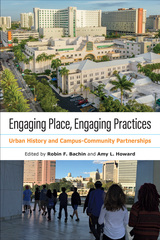 Engaging Place, Engaging Practices: Urban History and Campus-Community Partnerships
Edited by Robin F. Bachin and Amy L. Howard
Temple University Press, 2023 Colleges and universities in urban centers have often leveraged their locales to appeal to students while also taking a more active role in addressing local challenges. They embrace civic engagement, support service-learning, tailor courses to local needs, and even provide university-community collaborations such as lab schools and innovation hubs. Engaging Place, Engaging Practices highlights the significant role the academy, in general, and urban history, in particular, can play in fostering these critical connections. The editors and contributors to this volume address topics ranging from historical injustices and affordable housing and land use to climate change planning and the emergence of digital humanities. These case studies reveal the intricate components of a city’s history and how they provide context and promote a sense of cultural belonging. This timely book appreciates and emphasizes the critical role universities must play as intentional—and humble—partners in addressing the past, present, and future challenges facing cities through democratic community engagement.
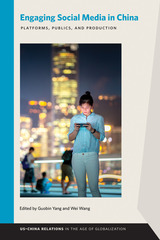 Engaging Social Media in China: Platforms, Publics, and Production
Guobin Yang
Michigan State University Press, 2021 Introducing the concept of state-sponsored platformization, this volume shows the complexity behind the central role the party-state plays in shaping social media platforms. The party-state increasingly penetrates commercial social media while aspiring to turn its own media agencies into platforms. Yet state-sponsored platformization does not necessarily produce the Chinese Communist Party’s desired outcomes. Citizens continue to appropriate social media for creative public engagement at the same time that more people are managing their online settings to reduce or refuse connection, inducing new forms of crafted resistance to hyper-social media connectivity. The wide-ranging essays presented here explore the mobile radio service Ximalaya.FM, Alibaba’s evolution into a multi-platform ecosystem, livestreaming platforms in the United States and China, the role of Twitter in Trump’s North Korea diplomacy, user-generated content in the news media, the emergence of new social agents mediating between state and society, social media art projects, Chinese and US scientists’ use of social media, and reluctance to engage with WeChat. Ultimately, readers will find that the ten chapters in this volume contribute significant new research and insights to the fast-growing scholarship on social media in China at a time when online communication is increasingly constrained by international struggles over political control and privacy issues.
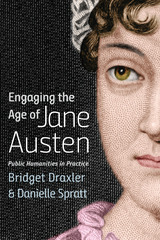 Engaging the Age of Jane Austen: Public Humanities in Practice
Bridget Draxler and Danielle Spratt
University of Iowa Press, 2018 Humanities scholars, in general, often have a difficult time explaining to others why their work matters, and eighteenth-century literary scholars are certainly no exception. To help remedy this problem, literary scholars Bridget Draxler and Danielle Spratt offer this collection of essays to defend the field’s relevance and demonstrate its ability to help us better understand current events, from the proliferation of media to ongoing social justice battles. The result is a book that offers a range of approaches to engaging with undergraduates, non-professionals, and broader publics into an appreciation of eighteenth-century literature. Essays draw on innovative projects ranging from a Jane Austen reading group held at the public library to students working with an archive to digitize an overlooked writer’s novel. Reminding us that the eighteenth century was an exhilarating age of lively political culture—marked by the rise of libraries and museums, the explosion of the press, and other platforms for public intellectual debates—Draxler and Spratt provide a book that will not only be useful to eighteenth-century scholars, but can also serve as a model for other periods as well. This book will appeal to librarians, archivists, museum directors, scholars, and others interested in digital humanities in the public life. Contributors: Gabriela Almendarez, Jessica Bybee, Nora Chatchoomsai, Gillian Dow, Bridget Draxler, Joan Gillespie, Larisa Good, Elizabeth K. Goodhue, Susan Celia Greenfield, Liz Grumbach, Kellen Hinrichsen, Ellen Jarosz, Hannah Jorgenson, John C. Keller, Naz Keynejad, Stephen Kutay, Chuck Lewis, Nicole Linton, Devoney Looser, Whitney Mannies, Ai Miller, Tiffany Ouellette, Carol Parrish, Paul Schuytema, David Spadafora, Danielle Spratt, Anne McKee Stapleton, Jessica Stewart, Colleen Tripp, Susan Twomey, Nikki JD White, Amy Weldon
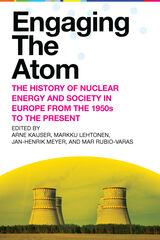 Engaging the Atom: The History of Nuclear Energy and Society in Europe from the 1950s to the Present
Arne Kaijser
West Virginia University Press, 2021 Transnational perspectives on the relationship between nuclear energy and society.
With the aim of overcoming the disciplinary and national fragmentation that characterizes much research on nuclear energy, Engaging the Atom brings together specialists from a variety of fields to analyze comparative case studies across Europe and the United States. It explores evolving relationships between society and the nuclear sector from the origins of civilian nuclear power until the present, asking why nuclear energy has been more contentious in some countries than in others and why some countries have never gone nuclear, or have decided to phase out nuclear, while their neighbors have committed to the so-called nuclear renaissance. Contributors examine the challenges facing the nuclear sector in the context of aging reactor fleets, pressing climate urgency, and increasing competition from renewable energy sources.
Written by leading academics in their respective disciplines, the nine chapters of Engaging the Atom place the evolution of nuclear energy within a broader set of national and international configurations, including its role within policies and markets.
 Engaging the Emotions in Spanish Culture and History
Luisa Elena Delgado
Vanderbilt University Press, 2016 Rather than being properties of the individual self, emotions are socially produced and deployed in specific cultural contexts, as this collection documents with unusual richness. All the essays show emotions to be a form of thought and knowledge, and a major component of social life—including in the nineteenth century, which attempted to relegate them to a feminine intimate sphere.
The collection ranges across topics such as eighteenth-century sensibility, nineteenth-century concerns with the transmission of emotions, early twentieth-century cinematic affect, and the contemporary mobilization of political emotions including those regarding nonstate national identities. The complexities and effects of emotions are explored in a variety of forms—political rhetoric, literature, personal letters, medical writing, cinema, graphic art, soap opera, journalism, popular music, digital media—with attention paid to broader European and transatlantic implications.
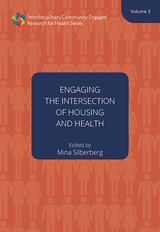 Engaging the Intersection of Housing and Health: Volume Three
Edited by Mina Silberberg
University of Minnesota Press, 2021 Researchers often hope that their work will inform social change. The questions that motivate them to pursue research careers in the first place often stem from observations about gaps between the world as we wish it to be and the world as it is, accompanied by a deep curiosity about how it might be made different. Researchers view their profession as providing important information about what is, what could be, and how to get there. However, if research is to inform social change, we must first change the way in which research is done.
Engaging the Intersection of Housing and Health offers case studies of research that is interdisciplinary, stakeholder-engaged and intentionally designed for “translation” into practice. There are numerous ways in which housing and health are intertwined. This intertwining—which is the focus of this volume—is lived daily by the children whose asthma is exacerbated by mold in their homes, the adults whose mental illness increases their risk for homelessness and whose homelessness worsens their mental and physical health, the seniors whose home environment enhances their risk of falls, and the families who must choose between paying for housing and paying for healthcare.
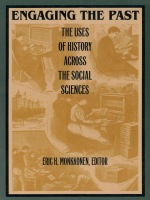 Engaging the Past: The Uses of History Across the Social Sciences
Eric H. Monkkonen
Duke University Press, 1994 Vigorous historical exploration has increased across the social sciences in the past two decades. Originally published as a series of articles in the journal Social Science History, the essays in this volume provide a guide to historical social science by surveying the use of historical data and methodologies in anthropology, sociology, political science, economics, and geography. Each essay in Engaging the Past pays close attention to the unique problems and methods associated with its particular social scientific discipline. By exploring questions raised by both contemporary and more established works within each field, the authors show that some of the best and most innovative research in each of the social sciences includes a strong historical component. Thus, as Eric H. Monkkonen’s introduction shows, these essays taken together make it clear that historical research provides a significant key to many of the major issues in the social sciences. Intended for the growing community of both social scientists and historians interested in reading or researching historically informed social science, Engaging the Past suggests future directions that might be taken by this work. Above all, by providing a set of user’s guides written by respected social scientists, it encourages future boundary crossings between history and each of the social sciences. Contributors. Andrew Abbott, Richard Dennis, Susan Kellog, Eric H. Monkkonen, David Brian Robertson, Hugh Rockoff
 Engaging With Nature: Essays on the Natural World in Medieval and Early Modern Europe
Barbara A. Hanawalt
University of Notre Dame Press, 2008
Historians and cultural critics face special challenges when treating the nonhuman natural world in the medieval and early modern periods. Their most daunting problem is that in both the visual and written records of the time, nature seems to be both everywhere and nowhere. In the broadest sense, nature was everywhere, for it was vital to human survival. Agriculture, animal husbandry, medicine, and the patterns of human settlement all have their basis in natural settings. Humans also marked personal, community, and seasonal events by natural occurrences and built their cultural explanations around the workings of nature, which formed the unspoken backdrop for every historical event and document of the time.
Yet in spite of the ubiquity of nature’s continual presence in the physical surroundings and the artistic and literary cultures of these periods, overt discussion of nature is often hard to find. Until the sixteenth century, responses to nature were quite often recorded only in the course of investigating other subjects. In a very real sense, nature went without saying.
As a result, modern scholars analyzing the concept of nature in the history of medieval and early modern Europe must often work in deeply interdisciplinary ways. This challenge is deftly handled by the contributors to Engaging with Nature, whose essays provide insights into such topics as concepts of animal/human relationships; environmental and ecological history; medieval hunting; early modern collections of natural objects; the relationship of religion and nature; the rise of science; and the artistic representations of exotic plants and animals produced by Europeans encountering the New World.
“As scholars of medieval and early modern Europe increasingly embrace environmental perspectives and animal studies, Engaging with Nature will be recognized as a landmark collection in the field. Taken together, the essays in this volume provide a synthetic overview of critical developments in the many disciplines that are now incorporating the approaches of natural and environmental studies. Each essay represents a substantial advance in scholarship and thought in its particular field. This is an essential collection for literary and cultural historians, and for historians of economy and society, art and ideas.” —Rita Copeland, University of Pennsylvania
“Engaging with Nature vividly captures the breadth and depth of human interactions with the natural world in premodern Europe. Its multidisciplinary approach generates new questions about how Europeans understood and connected with nature and delves into issues that will interest the specialist and the general reader alike. The book challenges readers to rethink not just the history of human engagement with nature but also the many ways the past has influenced our modern conceptions of ecology and environment.” —James Masschaele, Rutgers University
"This substantial collection of articles is far more than a response to current obsessions with climate change. It is a thought-provoking demonstration of the inter-disciplinary character of research on medieval history and culture. Students of medieval and early-modern society and economy, literature, philosophy, and art, will find much that is new in these essays, and much to provoke their own thinking about the vexed relationship of human societies with their natural surroundings." —Fredric Cheyette, Emeritus professor of history, Amherst College
“Engaging with Nature is a deeply pleasurable volume to read. Using an incredible range of primary and secondary sources, the authors richly realize the methodological promise inherent in the emergent field of medieval and pre-modern studies on the history of nature.” —Kathleen Biddick, Temple University
“Engaging with Nature is a collection of impeccable scholarship that will make a highly original contribution to the emergent field of medieval and pre-modern studies on the history of nature."
—Claire Sponsler, University of Iowa
 Engaging with Reality: Documentary and Globalization
Ib Bondebjerg
Intellect Books, 2014 As our world becomes more globalized, documentary film and television tell more cosmopolitan stories of the world’s social, political, and cultural situation. Ib Bondebjerg examines how global challenges are reflected and represented in documentaries from the United States, the United Kingdom, and Scandinavia after 2001. The documentaries deal with the war on terror, the globalization of politics, migration, the multicultural challenge, and climate change.
Engaging with Reality is framed by theories of globalization and delves into the development of a new global media culture. It also deals with theories of documentary genres and their social and cultural functions. It discusses cosmopolitanism and the role and forms of documentary in a new digital and global media culture. It will be essential reading for those looking to better understand documentary and the new transnational approach to modern media culture.
Engaging with Shakespeare: Responses of George Eliot and other Women Novelists
Marianne L. Novy
University of Iowa Press, 1998 In Engaging with Shakespeare: Responses of George Eliot and Other Women Novelists,Marianne Novy combines feminist criticism of women writers with feminist criticism of Shakespeare by examining how a number of novels by women rewrite his works and his cultural image.
Engaging Young People in Civic Life
James Youniss
Vanderbilt University Press, 2009 The myth of generations of disengaged youth has been shattered by increases in youth turnout in the 2004, 2006, and 2008 primaries. Young Americans are responsive to effective outreach efforts, and this collection addresses how to best provide opportunities for enhancing civic learning and forming lasting civic identities.
The thirteen original essays are based on research in schools and in settings beyond the schoolyard where civic life is experienced. One focus is on programs for those schools in poor communities that tend to overlook civic education. Another chapter reports on how two city governments—Hampton, Virginia, and San Francisco—have invited youth to participate on boards and in agencies. A cluster of chapters focuses on the civic education programs in Canada and Western Europe, where, as in the United States, immigration and income inequality raise challenges to civic life.
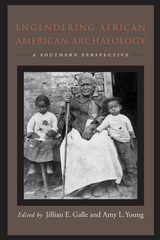 Engendering African American Archaeology: A Southern Perspective
Jillian E. Galle
University of Tennessee Press, 2015
“A welcome publication, this book will nicely supplement the other books that are now appearing in the field of African American archaeology.”
—Charles E. Orser Jr., Illinois State University
Over the last decade, the field of American historical archaeology has seen enormous growth in the study of people of African descent. This edited volume is the first dedicated solely to archaeology and the construction of gender in an African American context. The common thread running through this collection is not a shared definition of gender or an agreed-upon feminist approach, but rather a regional thread, a commitment to understanding ethnicity and gender within the social, political, and ideological structures of the eighteenth- and nineteenth-century American South.
Taken together, these essays represent a departure in historical archaeology, an important foray into the study of the construction of gender within various African American communities that is based in the archaeological record. Those interested in historical archaeology, history, women’s studies and African American studies will find this a valuable addition to the literature. Topics range from gendered residential and consumption patterns in colonial Virginia and the construction of identity in Middle Tennessee to midwifery practices in postbellum Louisiana. Contributors to this volume include Melanie Cabak, Marie Danforth, Garrett Fesler, Jillian Galle, Barbara Heath, Larry McKee, Patricia Samford, Elizabeth Scott, Brian Thomas, Larissa Thomas, Laura Wilkie, Kristin Wilson, and Amy Young.
Jillian E. Galle is project manager of the Digital Archaeological Archive of Chesapeake Slavery at Monticello. Amy L. Young is assistant professor at the University of Southern Mississippi.
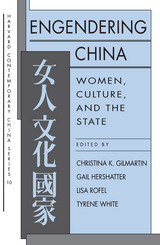 Engendering China: Women, Culture, and the State
Christina Gilmartin
Harvard University Press, 1994 This first significant collection of essays on women in China in more than two decades captures a pivotal moment in a cross-cultural—and interdisciplinary—dialogue. For the first time, the voices of China-based scholars are heard alongside scholars positioned in the United States. The distinguished contributors to this volume are of different generations, hold citizenship in different countries, and were trained in different disciplines, but all embrace the shared project of mapping gender in China and making power-laden relationships visible. The essays take up gender issues from a variety of disciplinary perspectives. Chapters focus on learned women in the eighteenth century, the changing status of contemporary village women, sexuality and reproduction, prostitution, women's consciousness, women's writing, the gendering of work, and images of women in contemporary Chinese fiction.
Some of the liveliest disagreements over the usefulness of western feminist theory and scholarship on China take place between Chinese working in China and Chinese in temporary or longtime diaspora. Engendering China will appeal to a broad academic spectrum, including scholars of Asian studies, critical theory, feminist studies, cultural studies, and policy studies.
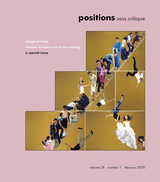 (En)gendering: Chinese Women's Art in the Making
Shuqin Cui, special issue editor
Duke University Press While contemporary Chinese art has arrived as a critical subject in art history and found market success, current art criticism has yet to fully engage with art made by Chinese women, especially from the perspective of gender politics. In “(En)gendering: Chinese Women's Art in the Making,” contributors—including artists, art historians, critics, and curators—consider how the work of contemporary women artists has generated new approaches to and perspectives on the Chinese art canon. The issue begins by laying a historical framework for the potentials and problems regarding the interpretation of Chinese women's art, tracing its evolution throughout a century of Chinese history. Next, the issue considers the spatial notion of boundary crossing, addressing how travel across national and theoretical boundaries affects the perception of artworks, and explores the misgivings of Chinese women artists about participating in a global exhibition system in which their artwork stands for “China” and “Women.” The issue concludes by looking at the idea of (en)gendering as a revision of women’s art prompting artists and the viewers of women’s artworks to challenge the conventional gaze that has dominated our ways of seeing. The issue considers the work of Chinese artists such as Lin Tianmiao, Lei Yan, Yin Xiuzhen, Cui Xiuwen, Yu Hong, and Liu Manwen.
Contributors. Julia F. Andrews, Lara C. W. Blanchard, Meiling Cheng, Shuqin Cui, Elise David, Linda Chui-han Lai, Tao Yongbai, Peggy Wang, Sasha Su-Ling Welland
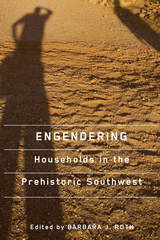 Engendering Households in the Prehistoric Southwest
Edited by Barbara J. Roth
University of Arizona Press, 2010 The French anthropologist Claude Lévi-Strauss once described a village as “deserted” when all the adult males had vanished. While his statement is from the first half of the twentieth century, it nonetheless illustrates an oversight that has persisted during most of the intervening decades.
Now Southwestern archaeologists have begun to delve into the task of “engendering” their sites. Using a “close to the ground” approach, the contributors to this book seek to engender the prehistoric Southwest by examining evidence at the household level.
Focusing on gendered activities in household contexts throughout the southwestern United States, this book represents groundbreaking work in this area. The contributors view households as a crucial link to past activities and behavior, and by engendering these households, we can gain a better understanding of their role in prehistoric society. Gender-structured household activities, in turn, can offer insight into broader-scale social and economic factors. The chapters offer a variety of theoretical and methodological approaches to engendering households and examine topics such as the division of labor, gender relations, household ritual, ceramic and ground stone production and exchange, and migration.
Engendering Households in the Prehistoric Southwest ultimately addresses broader issues of interest to many archaeologists today, including households and their various forms, identity and social boundary formation, technological style, and human agency. Focusing on gendered activities in household contexts throughout the southwestern United States, this book represents groundbreaking work in this area. The contributors view households as a crucial link to past activities and behavior, and by engendering these households, we can gain a better understanding of their role in prehistoric society. Gender-structured household activities, in turn, can offer insight into broader-scale social and economic factors.
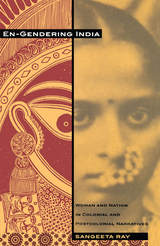 En-Gendering India: Woman and Nation in Colonial and Postcolonial Narratives
Sangeeta Ray
Duke University Press, 2000 En-Gendering India offers an innovative interpretation of the role that gender played in defining the Indian state during both the colonial and postcolonial eras. Focusing on both British and Indian literary texts—primarily novels—produced between 1857 and 1947, Sangeeta Ray examines representations of "native" Indian women and shows how these representations were deployed to advance notions of Indian self-rule as well as to defend British imperialism.
Through her readings of works by writers including Bankimchandra Chatterjee, Rabindranath Tagore, Harriet Martineau, Flora Annie Steel, Anita Desai, and Bapsi Sidhaa, Ray demonstrates that Indian women were presented as upper class and Hindu, an idealization that paradoxically served the needs of both colonial and nationalist discourses. The Indian nation’s goal of self-rule was expected to enable women’s full participation in private and public life. On the other hand, British colonial officials rendered themselves the protectors of passive Indian women against their “savage” male countrymen. Ray shows how the native woman thus became a symbol for both an incipient Indian nation and a fading British Empire. In addition, she reveals how the figure of the upper-class Hindu woman created divisions with the nationalist movement itself by underscoring caste, communal, and religious differences within the newly emerging state. As such, Ray’s study has important implications for discussions about nationalism, particularly those that address the concepts of identity and nationalism.
Building on recent scholarship in feminism and postcolonial studies, En-Gendering India will be of interest to scholars in those fields as well as to specialists in nationalism and nation-building and in Victorian, colonial, and postcolonial literature and culture.
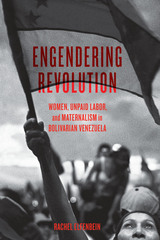 Engendering Revolution: Women, Unpaid Labor, and Maternalism in Bolivarian Venezuela
By Rachel Elfenbein
University of Texas Press, 2019 In 1999, Venezuela became the first country in the world to constitutionally recognize the socioeconomic value of housework and enshrine homemakers’ social security. This landmark provision was part of a larger project to transform the state and expand social inclusion during Hugo Chávez’s presidency. The Bolivarian revolution opened new opportunities for poor and working-class—or popular—women’s organizing. The state recognized their unpaid labor and maternal gender role as central to the revolution. Yet even as state recognition enabled some popular women to receive public assistance, it also made their unpaid labor and organizing vulnerable to state appropriation. Offering the first comprehensive analysis of this phenomenon, Engendering Revolution demonstrates that the Bolivarian revolution cannot be understood without comprehending the gendered nature of its state-society relations. Showcasing field research that comprises archival analysis, observation, and extensive interviews, these thought-provoking findings underscore the ways in which popular women sustained a movement purported to exalt them, even while many could not access social security and remained socially, economically, and politically vulnerable.
 Engendering Song: Singing and Subjectivity at Prespa Albanian Weddings
Jane C. Sugarman
University of Chicago Press, 1997 For Prespa Albanians, both at home in Macedonia and in the diaspora, the most opulent, extravagant, and socially significant events of any year are wedding ceremonies. During days and weeks of festivities, wedding celebrants interact largely through singing, defining and renegotiating as they do so the very structure of their social world and establishing a profound cultural touchstone for Prespa communities around the world.
Combining photographs, song texts, and vibrant recordings of the music with her own evocative descriptions, ethnomusicologist Jane C. Sugarman focuses her account of Prespa weddings on notions of gendered identity, demonstrating the capacity of singing to generate and transform relations of power within Prespa society. Engendering Song is an innovative theoretical work, with a scholarly importance extending far beyond southeast European studies. It offers unique and timely contributions to the analysis of music and gender, music in diaspora cultures, and the social constitution of self and subjectivity.
 The Engine of Enterprise: Credit in America
Rowena Olegario
Harvard University Press, 2016 American households, businesses, and governments have always used intensive amounts of credit. The Engine of Enterprise traces the story of credit from colonial times to the present, highlighting its productive role in building national prosperity. Rowena Olegario probes enduring questions that have divided Americans: Who should have access to credit? How should creditors assess borrowers’ creditworthiness? How can people accommodate to, rather than just eliminate, the risks of a credit-dependent economy?
In the 1790s Alexander Hamilton saw credit as “the invigorating principle” that would spur the growth of America’s young economy. His great rival, Thomas Jefferson, deemed it a grave risk, inviting burdens of debt that would amount to national self-enslavement. Even today, credit lies at the heart of longstanding debates about opportunity, democracy, individual responsibility, and government’s reach.
Olegario goes beyond these timeless debates to explain how the institutions and legal frameworks of borrowing and lending evolved and how attitudes about credit both reflected and drove those changes. Properly managed, credit promised to be a powerful tool. Mismanaged, it augured disaster. The Engine of Enterprise demonstrates how this tension led to the creation of bankruptcy laws, credit-reporting agencies, and insurance regimes to harness the power of credit while minimizing its destabilizing effects.
Engine Running: Essays
Cade Mason
Ohio State University Press, 2022 Runner Up, 2021 Gournay Prize
Engine Running explores debut author Cade Mason’s gradual distancing from home and old selves alongside an increasingly fractured family doing the same. Starting at the beginning of his parents’ love and working past its end, he combs through memory to piece together a portrait of a family then and now: of a father, reeling after a blindsiding divorce; of a mother, anxious to move on; of a sister, caught in the crossfire; and of a son, learning to embrace his sexuality even as he fears that his own loves may have deepened the rift between his parents.
Lush and innovative, these essays contemplate childhood memories and family secrets, religion and queerness in the rural South, and the ways rituals and contours of manhood are passed through generations. Most of all, we feel with Mason what it is to grapple with and love a place even as you yearn to leave.
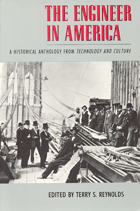 The Engineer in America: A Historical Anthology from Technology and Culture
Edited by Terry S. Reynolds
University of Chicago Press, 1991 With some two million practitioners, engineers form one of America's largest professional groups; indeed, it is the single largest occupation of American males today. The rise of this profession and its place in American society provide the focus for this anthology.
Spanning two centuries and the various subdisciplines of the field, these essays demonstrate the paradoxical role engineers have played in building (although usually not controlling) the infrastructure on which America's prosperity is based. This collection of seventeen essays traces the rise of the engineering profession and its evolving contribution to the development of America's material and economic success. Topics addressed include:
*American engineering's birth from European traditions
*Impact of science on engineering practice
*Changing relationship between engineers and bureaucratic organizations
*Growth of engineering professional institutions
Thoughtfully organized and unique in its scope, this volume will be a welcome overview for both students and scholars of the history of technology.
These essays were originally published in the journal Technology and Culture.
 Engineered to Sell: European Émigrés and the Making of Consumer Capitalism
Jan L. Logemann
University of Chicago Press, 2019 The mid-twentieth-century marketing world influenced nearly every aspect of American culture—music, literature, politics, economics, consumerism, race relations, gender, and more. In Engineered to Sell, Jan L. Logemann traces the transnational careers of consumer engineers in advertising, market research, and commercial design who transformed capitalism from the 1930s through the 1960s. He argues that the history of marketing consumer goods is not a story of American exceptionalism. Instead, the careers of immigrants point to the limits of the “Americanization” paradigm. Logemann explains the rise of a dynamic world of goods and examines how and why consumer engineering was shaped by transatlantic exchanges. From Austrian psychologists and little-known social scientists to the illustrious Bauhaus artists, the emigrés at the center of this story illustrate the vibrant cultural and commercial connections between metropolitan centers: Vienna and New York; Paris and Chicago; Berlin and San Francisco. By focusing on the transnational lives of emigré consumer researchers, marketers, and designers, Engineered to Sell details the processes of cultural translation and adaptation that mark both the midcentury transformation of American marketing and the subsequent European shift to “American” consumer capitalism.
 Engineering Animals: How Life Works
Mark Denny and Alan McFadzean
Harvard University Press, 2011 The alarm calls of birds make them difficult for predators to locate, while the howl of wolves and the croak of bullfrogs are designed to carry across long distances. From an engineer's perspective, how do such specialized adaptations among living things really work? And how does physics constrain evolution, channeling it in particular directions?
Writing with wit and a richly informed sense of wonder, Denny and McFadzean offer an expert look at animals as works of engineering, each exquisitely adapted to a specific manner of survival, whether that means spinning webs or flying across continents or hunting in the dark-or writing books. This particular book, containing more than a hundred illustrations, conveys clearly, for engineers and nonengineers alike, the physical principles underlying animal structure and behavior.
Pigeons, for instance-when understood as marvels of engineering-are flying remote sensors: they have wideband acoustical receivers, hi-res optics, magnetic sensing, and celestial navigation. Albatrosses expend little energy while traveling across vast southern oceans, by exploiting a technique known to glider pilots as dynamic soaring. Among insects, one species of fly can locate the source of a sound precisely, even though the fly itself is much smaller than the wavelength of the sound it hears. And that big-brained, upright Great Ape? Evolution has equipped us to figure out an important fact about the natural world: that there is more to life than engineering, but no life at all without it.
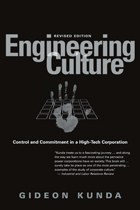 Engineering Culture: Control and Commitment in a High-Tech Corporation
Gideon Kunda
Temple University Press, 2006 Engineering Culture is an award-winning ethnography of the engineering division of a large American high-tech corporation. Now, this influential book—which has been translated into Japanese, Italian, and Hebrew—has been revised to bring it up to date. In Engineering Culture, Gideon Kunda offers a critical analysis of an American company's well-known and widely emulated "corporate culture." Kunda uses detailed descriptions of everyday interactions and rituals in which the culture is brought to life, excerpts from in-depth interviews and a wide variety of corporate texts to vividly portray managerial attempts to design and impose the culture and the ways in which it is experienced by members of the organization. The company's management, Kunda reveals, uses a variety of methods to promulgate what it claims is a non-authoritarian, informal, and flexible work environment that enhances and rewards individual commitment, initiative, and creativity while promoting personal growth. The author demonstrates, however, that these pervasive efforts mask an elaborate and subtle form of normative control in which the members' minds and hearts become the target of corporate influence. Kunda carefully dissects the impact this form of control has on employees' work behavior and on their sense of self. In the conclusion written especially for this edition, Kunda reviews the company's fortunes in the years that followed publication of the first edition, reevaluates the arguments in the book, and explores the relevance of corporate culture and its management today.
 Engineering Education and Practice: Embracing a Catholic Vision
James L. Heft, S.M.
University of Notre Dame Press, 2012
Engineering Education and Practice: Embracing a Catholic Visionis a collection of essays exploring how major themes of Catholic social teaching—respect for the environment, sustainability, technological design, and service to the poor—all positively affect engineering curricula, students, and faculty. Many engineering programs at American universities focus solely on developing technological sophistication without promoting ethical and humanitarian priorities. The contributors to this collection argue, however, that undergraduate engineering education needs to be broadened beyond its current narrow restrictions.
The authors of this unique collection, nearly all of whom are engineers themselves, show how some Christian universities in the United States have found creative ways of opening up their engineering curricula. They demonstrate how the professional education of engineers can be enriched not only by ethical and religious themes, which are typically isolated in humanities curricula, but also by special fieldwork courses that offer hands-on service-learning opportunities and embody a rich educational synthesis.
“Engineering Education and Practiceis a superb introduction to how engineering education and research should take place in Catholic or, more generally, in Christian universities. The diverse group of contributors—mostly engineers and theologians who have pursued both teaching and research careers at Catholic universities with engineering schools—offers an appealing combination of theoretical and practical essays. Their efforts are sure to play a role in the very rich discussion currently ongoing at every level of Christian higher education about how to retain what is distinctive about Christian higher education while making necessary reforms."
—David Solomon, W.P. and H.B. White Director, Notre Dame Center for Ethics and Culture, University of Notre Dame
 Engineering European Unity: The Quest for the Right Solution Across Centuries
Éva Bóka
Central European University Press, 2023 Which European and non-European ideas and practices facilitated the shaping of European unity? Or rather, which pursuits led to deadlocks in the cooperation between states? The book seeks answers to these questions by surveying the historical attempts at realizing supranational patterns of governance in Europe since the Middle Ages. The main focus is on the nineteenth and twentieth century organizational models of European unification. The analysis draws on an abundance of historical and legal source material. While the author encourages critical thinking about European integration, the exploration is admittedly based on specific values. Éva Bóka claims that the struggle for the humanization of power with its democratic creative force has been the major driver in the development of the system of liberties and the idea of European unity. The analysis of the historical process up to the Lisbon Treaty (2007) with the recognition of common, shared, and supported competences meets the author’s set of values to a great extent. The last part of the book examines whether the European Union can serve as a political and economic organizational model for other parts of the world.
Engineering High Quality Medical Software: Regulations, standards, methodologies and tools for certification
Antonio Coronato
The Institution of Engineering and Technology, 2018 No longer confined to medical devices, medical software has become a pervasive technology giving healthcare operators access to clinical information stored in electronic health records and clinical decision support systems, supporting robot-assisted telesurgery, and providing the technology behind ambient assisted living. These systems and software must be designed, built and maintained according to strict regulations and standards to ensure that they are safe, reliable and secure.
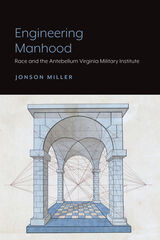 Engineering Manhood: Race and the Antebellum Virginia Military Institute
Jonson Miller
Lever Press, 2020 It is not an accident that American engineering is so disproportionately male and white; it took and takes work to create and sustain this situation. Engineering Manhood: Race and the Antebellum Virginia Military Institute examines the process by which engineers of the antebellum Virginia Military Institute cultivated whiteness, manhood, and other intersecting identities as essential to an engineering professional identity. VMI opened in 1839 to provide one of the earliest and most thorough engineering educations available in antebellum America. The officers of the school saw engineering work as intimately linked to being a particular type of person, one that excluded women or black men. This particular white manhood they crafted drew upon a growing middle-class culture. These precedents impacted engineering education broadly in this country and we continue to see their legacy today.
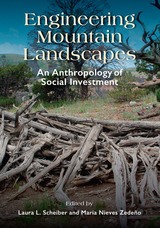 Engineering Mountain Landscapes: An Anthropology of Social Investment
Laura L. Scheiber and María N. Zedeño
University of Utah Press, 2015 Humans have occupied mountain environments and relied on mountain resources since the terminal Pleistocene. Their continuous interaction with the land from generation to generation has left material imprints ranging from anthropogenic fires to vision quest sites. The diverse case studies presented in this collection explore the material record of North American mountain dwellers and habitual users of high-elevation resources in terms of social investment—the intergenerational commitment of a group to a particular landscape. Contributors look creatively at the significance of social investment and its material and nonmaterial consequences, addressing landscape engineering at different times through diverse theoretical standpoints and archaeological, historical, and ethnographic data from varied mountain environments. Together, these original contributions demonstrate that social investment encompasses timeless ecological and ritual knowledge as well as innovation born from daily practice, tradition, and periodic adjustment to fit new social and political imperatives. Engineering Mountain Landscapes offers both substantive ideas of broad intellectual interest, specific case studies with state-of-art methodology, and a wealth of comparative data.
Engineering Secure Internet of Things Systems
Benjamin Aziz
The Institution of Engineering and Technology, 2016 The Internet of Things (IoT) - the emerging global interconnection of billions of 'smart' devices - will be collecting increasing amounts of private and sensitive data about our lives, and will require increasing degrees of reliability and trustworthiness in terms of the levels of assurance provided with respect to confidentiality, integrity and availability. This book examines these important security considerations for the IoT.
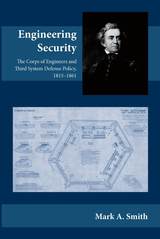 Engineering Security: The Corps of Engineers and Third System Defense Policy, 1815–1861
Mark A. Smith
University of Alabama Press, 2009 Thorough examination of the antebellum fortifications that formed the backbone of U.S. military defense during the National Period
The system of coastal defenses built by the federal government after the War of 1812 was more than a series of forts standing guard over a watery frontier. It was an integrated and comprehensive plan of national defense developed by the US Army Corps of Engineers, and it represented the nation’s first peacetime defense policy.
Known as the Third System since it replaced two earlier attempts, it included coastal fortifications but also denoted the values of the society that created it. The governing defense policy was one that combined permanent fortifications to defend seaports, a national militia system, and a small regular army.
The Third System remained the defense paradigm in the United States from 1816 to 1861, when the onset of the Civil War changed the standard. In addition to providing the country with military security, the system also provided the context for the ongoing discussion in Congress over national defense through annual congressional debates on military funding.
 Engineering Stability: Rebuilding the State in Twenty-First Century Chinese Universities
Yan Xiaojun
University of Michigan Press, 2024 While the processes of founding a new state or constructing a new political order after a transition have been well-studied, there has been much less attention to how regimes that survive major political crises purposefully reinvent a postcrisis state to respond to updated concepts, new circumstances, changed social demands, and a realigned elite consensus. In Engineering Stability, Yan Xiaojun examines the Chinese Communist Party’s efforts to reassert control and restore order on university campuses in the post-Tiananmen era. Since prominent national universities serve the nation-state as training grounds for the country’s future political, economic, and cultural elites, public life on university campuses has immediate political relevance.
Drawing on rich materials gathered from in-depth field research in China during the Xi Jinping era, Engineering Stability invites scholars of comparative politics, state theory, contentious politics, and political development to rethink and reimagine how what Yan calls “a compromised autocratic state” is rebuilt within and from itself after overcoming a traumatic moment of vulnerability. The book further details the four types of infrastructure — institutional, significative, regulatory, and incentivizing — that state rebuilders need to overhaul, and looks into the campaign of state rebuilding in post-Tiananmen Chinese universities and its implications for our understanding of politics in general.
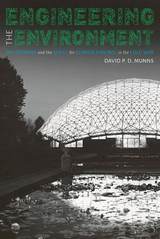 Engineering the Environment: Phytotrons and the Quest for Climate Control in the Cold War
David P. D. Munns
University of Pittsburgh Press, 2017 This is the first history of phytotrons, huge climate-controlled laboratories that enabled plant scientists to experiment on the environmental causes of growth and development of living organisms. Made possible by computers and other modern technologies of the early Cold War, such as air conditioning and humidity control, phytotrons promised an end to global hunger and political instability, spreading around the world to thirty countries after World War II. The United States built nearly a dozen, including the first at Caltech in 1949. By the mid-1960s, as support and funding for basic science dwindled, phytotrons declined and ultimately disappeared—until, nearly thirty years later, the British built the Ecotron to study the impact of climate change on biological communities. By recalling the forgotten history of phytotrons, David P. D. Munns reminds us of the important role they can play in helping researchers unravel the complexities of natural ecosystems in the Anthropocene.
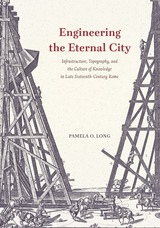 Engineering the Eternal City: Infrastructure, Topography, and the Culture of Knowledge in Late Sixteenth-Century Rome
Pamela O. Long
University of Chicago Press, 2018 Between the catastrophic flood of the Tiber River in 1557 and the death of the “engineering pope” Sixtus V in 1590, the city of Rome was transformed by intense activity involving building construction and engineering projects of all kinds. Using hundreds of archival documents and primary sources, Engineering the Eternal City explores the processes and people involved in these infrastructure projects—sewers, bridge repair, flood prevention, aqueduct construction, the building of new, straight streets, and even the relocation of immensely heavy ancient Egyptian obelisks that Roman emperors had carried to the city centuries before.
This portrait of an early modern Rome examines the many conflicts, failures, and successes that shaped the city, as decision-makers tried to control not only Rome’s structures and infrastructures but also the people who lived there. Taking up visual images of the city created during the same period—most importantly in maps and urban representations, this book shows how in a time before the development of modern professionalism and modern bureaucracies, there was far more wide-ranging conversation among people of various backgrounds on issues of engineering and infrastructure than there is in our own times. Physicians, civic leaders, jurists, cardinals, popes, and clerics engaged with painters, sculptors, architects, printers, and other practitioners as they discussed, argued, and completed the projects that remade Rome.
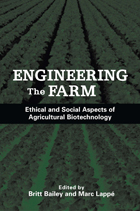 Engineering the Farm: The Social And Ethical Aspects Of Agricultural Biotechnology
Edited by Marc Lappe and Britt Bailey
Island Press, 2002 Engineering the Farm offers a wide-ranging examination of the social and ethical issues surrounding the production and consumption of genetically modified organisms (GMOs), with leading thinkers and activists taking a broad theoretical approach to the subject. Topics covered include: - the historical roots of the anti-biotechnology movement
- ethical issues involved in introducing genetically altered crops
- questions of patenting and labeling
- the "precautionary principle" and its role in the regulation of GMOs
- effects of genetic modification on the world's food supply
- ecological concerns and impacts on traditional varieties of domesticated crops
- potential health effects of GMOs
Contributors argue that the scope, scale, and size of the present venture in crop modification is so vast and intensive that a thoroughgoing review of agricultural biotechnology must consider its global, moral, cultural, and ecological impacts as well as its effects on individual consumers. Throughout, they argue that more research is needed on genetically modified food and that consumers are entitled to specific information about how food products have been developed. Despite its increasing role in worldwide food production, little has been written about the broader social and ethical implications of GMOs. Engineering the Farm offers a unique approach to the subject for academics, activists, and policymakers involved with questions of environmental policy, ethics, agriculture, environmental health, and related fields.
Engineering the Future, Understanding the Past: A Social History of Technology
Erik van der Vleuten, Ruth Oldenziel, and Mila Davids
Amsterdam University Press, 2017 Technology today is often presented as our best hope of solving the world's social and sustainability problems. And that's nothing new: engineers have always sought to meet the big challenges of their times-even as those challenges have shaped their technology. This book offers a historical look at those interactions between engineering and social challenges, showing how engineers developed solutions to past problems, and looking at the ways that those solutions often bring with them unintended consequences that themselves require solving.
 Engineering the Lower Danube: Technology and Territoriality in an Imperial Borderland, Late Eighteenth and Nineteenth Centuries
Luminita Gatejel
Central European University Press, 2023 The Lower Danube—the stretch of Europe’s second longest river between the Romanian-Serbian border and the confluence to the Black Sea—was effectively transformed during the late eighteenth and nineteenth centuries. In describing this lengthy undertaking, Luminita Gatejel proposes that remaking two key stretches—the Iron Gates and the delta—not only physically altered the river but also redefined it in a legal and political sense. Since the late eighteenth century, military conflicts and peace treaties changed the nature of sovereignty over the area, as the expansionist tendencies of the Habsburg and British Empires encountered rival Ottoman and Russian imperial plans. The inconvenience that the river’s physical shape obstructed free navigation and the growth of commercial traffic, was an increasing concern to all parties. This book shows that alongside imperial aspirations, transnational actors like engineers, commissioners and entrepreneurs were the driving force behind the river regulation. In this highly original, deeply researched, and carefully crafted study, Gatejel explores the formation of international cooperation, the emergence of technical expertise and the emergence of engineering as a profession. This constellation turned the Lower Danube into a laboratory for experimenting with new forms of international cooperation, economic integration, and nature transformation.
Engineering the Metaverse: Enabling technologies, platforms and use cases
Pethuru Raj
The Institution of Engineering and Technology, 2025 The metaverse offers a new way of interacting with the world via immersive and interactive technologies. It has the potential to change the way we learn, work and play. 3D modelling, artificial intelligence, virtual, augmented, extended and mixed reality (VR/AR/XR/MR), the Internet of Things (IoT), Web 3.0, 5G and 6G communication, digital twins and simulation technologies, edge and cloud computing, blockchain and cybersecurity are seen as the key enabling and supporting technologies and tools for establishing the next generation metaverse environments. Industrial verticals are keen to embrace the flexible paradigm of the metaverse to be more resilient and relevant to their customers and consumers.
Engineering the Revolution: Arms and Enlightenment in France, 1763-1815
Ken Alder
University of Chicago Press, 2010 Engineering the Revolution documents the forging of a new relationship between technology and politics in Revolutionary France, and the inauguration of a distinctively modern form of the “technological life.” Here, Ken Alder rewrites the history of the eighteenth century as the total history of one particular artifact—the gun—by offering a novel and historical account of how material artifacts emerge as the outcome of political struggle. By expanding the “political” to include conflict over material objects, this volume rethinks the nature of engineering rationality, the origins of mass production, the rise of meritocracy, and our interpretation of the Enlightenment and the French Revolution.
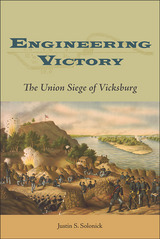 Engineering Victory: The Union Siege of Vicksburg
Justin S. Solonick
Southern Illinois University Press, 2015 On May 25, 1863, after driving the Confederate army into defensive lines surrounding Vicksburg, Mississippi, Union major general Ulysses S. Grant and his Army of the Tennessee laid siege to the fortress city. With no reinforcements and dwindling supplies, the Army of Vicksburg finally surrendered on July 4, yielding command of the Mississippi River to Union forces and effectively severing the Confederacy. In this illuminating volume, Justin S. Solonick offers the first detailed study of how Grant’s midwesterners serving in the Army of the Tennessee engineered the siege of Vicksburg, placing the event within the broader context of U.S. and European military history and nineteenth-century applied science in trench warfare and field fortifications. In doing so, he shatters the Lost Cause myth that Vicksburg’s Confederate garrison surrendered due to lack of provisions. Instead of being starved out, Solonick explains, the Confederates were dug out. After opening with a sophisticated examination of nineteenth-century military engineering and the history of siege craft, Solonick discusses the stages of the Vicksburg siege and the implements and tactics Grant’s soldiers used to achieve victory. As Solonick shows, though Grant lacked sufficient professional engineers to organize a traditional siege—an offensive tactic characterized by cutting the enemy’s communication lines and digging forward-moving approach trenches—the few engineers available, when possible, gave Union troops a crash course in military engineering. Ingenious midwestern soldiers, in turn, creatively applied engineering maxims to the situation at Vicksburg, demonstrating a remarkable ability to adapt in the face of adversity. When instruction and oversight were not possible, the common soldiers improvised. Solonick concludes with a description of the surrender of Vicksburg, an analysis of the siege’s effect on the outcome of the Civil War, and a discussion of its significance in western military history. Solonick’s study of the Vicksburg siege focuses on how the American Civil War was a transitional one with its own distinct nature, not the last Napoleonic war or the herald of modern warfare. At Vicksburg, he reveals, a melding of traditional siege craft with the soldiers’ own inventiveness resulted in Union victory during the largest, most successful siege in American history.
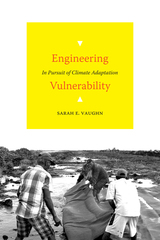 Engineering Vulnerability: In Pursuit of Climate Adaptation
Sarah E. Vaughn
Duke University Press, 2022 In Engineering Vulnerability Sarah E. Vaughn examines climate adaptation against the backdrop of ongoing processes of settler colonialism and the global climate change initiatives that seek to intervene in the lives of the world’s most vulnerable. Her case study is Guyana in the aftermath of the 2005 catastrophic flooding that ravaged the country’s Atlantic coastal plain. The country’s ensuing engineering projects reveal the contingencies of climate adaptation and the capacity of flooding to shape Guyanese expectations about racial (in)equality. Analyzing the coproduction of race and vulnerability, Vaughn details why climate adaptation has implications for how we understand the past and the continued human settlement of a place. Such understandings become particularly apparent not only through experts’ and ordinary citizens’ disputes over resources but in their attention to the ethical practice of technoscience over time. Approaching climate adaptation this way, Vaughn exposes the generative openings as well as gaps in racial thinking for theorizing climate action, environmental justice, and, more broadly, future life on a warming planet.
Duke University Press Scholars of Color First Book Award recipient
 Engineering—An Endless Frontier
Sunny Y. Auyang
Harvard University Press, 2004 Genetic engineering, nanotechnology, astrophysics, particle physics: We live in an engineered world, one where the distinctions between science and engineering, technology and research, are fast disappearing. This book shows how, at the dawn of the twenty-first century, the goals of natural scientists—to discover what was not known—and that of engineers—to create what did not exist—are undergoing an unprecedented convergence.
Sunny Y. Auyang ranges widely in demonstrating that engineering today is not only a collaborator with science but its equal. In concise accounts of the emergence of industrial laboratories and chemical and electrical engineering, and in whirlwind histories of the machine tools and automobile industries and the rise of nuclear energy and information technology, her book presents a broad picture of modern engineering: its history, structure, technological achievements, and social responsibilities; its relation to natural science, business administration, and public policies. Auyang uses case studies such as the development of the F-117A Nighthawk and Boeing 777 aircraft, as well as the experiences of engineer-scientists such as Oliver Heaviside, engineer-entrepreneurs such as Henry Ford and Bill Gates, and engineer-managers such as Alfred Sloan and Jack Welch to give readers a clear sense of engineering’s essential role in the future of scientific research.
 Engineers' Handbook of Industrial Microwave Heating
Roger Meredith
The Institution of Engineering and Technology, 1998 Heating materials using microwave energy offers many advantages in industrial processes, including improved quality, efficiency and control. There is a growing interest in microwave heating throughout industry and there are now many research establishments, both academic and industrial, working in this field. Microwave technology is a well developed science in the areas of radar and communications, supported by a large bibliography, but this is not the case for its applications to industry. The aim of this book is first to present the fundamentals of microwave technology that are relevant to industrial practice in a manner accessible to engineers, scientists and technicians who may have little or no prior knowledge of the subject. Second, it presents a perspective on the range and scope of the techniques and hardware used, giving detailed descriptions, making critical comparisons and commenting frequently on practical issues of design.
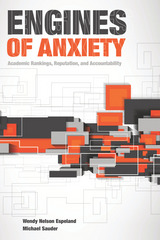 Engines of Anxiety: Academic Rankings, Reputation, and Accountability
espeland
Russell Sage Foundation, 2016 Students and the public routinely consult various published college rankings to assess the quality of colleges and universities and easily compare different schools. However, many institutions have responded to the rankings in ways that benefit neither the schools nor their students. In Engines of Anxiety, sociologists Wendy Espeland and Michael Sauder delve deep into the mechanisms of law school rankings, which have become a top priority within legal education. Based on a wealth of observational data and over 200 in-depth interviews with law students, university deans, and other administrators, they show how the scramble for high rankings has affected the missions and practices of many law schools. Engines of Anxiety tracks how rankings, such as those published annually by the U.S. News & World Report, permeate every aspect of legal education, beginning with the admissions process. The authors find that prospective law students not only rely heavily on such rankings to evaluate school quality, but also internalize rankings as expressions of their own abilities and flaws. For example, they often view rejections from “first-tier” schools as a sign of personal failure. The rankings also affect the decisions of admissions officers, who try to balance admitting diverse classes with preserving the school’s ranking, which is dependent on factors such as the median LSAT score of the entering class. Espeland and Sauder find that law schools face pressure to admit applicants with high test scores over lower-scoring candidates who possess other favorable credentials. Engines of Anxiety also reveals how rankings have influenced law schools’ career service departments. Because graduates’ job placements play a major role in the rankings, many institutions have shifted their career-services resources toward tracking placements, and away from counseling and network-building. In turn, law firms regularly use school rankings to recruit and screen job candidates, perpetuating a cycle in which highly ranked schools enjoy increasing prestige. As a result, the rankings create and reinforce a rigid hierarchy that penalizes lower-tier schools that do not conform to the restrictive standards used in the rankings. The authors show that as law schools compete to improve their rankings, their programs become more homogenized and less accessible to non-traditional students. The ranking system is considered a valuable resource for learning about more than 200 law schools. Yet, Engines of Anxiety shows that the drive to increase a school’s rankings has negative consequences for students, educators, and administrators and has implications for all educational programs that are quantified in similar ways.
 Engines of Enterprise: An Economic History of New England
Peter Temin
Harvard University Press, 2000 New England's economy has a history as dramatic as any in the world. From an inauspicious beginning--as immigration ground to a halt in the eighteenth century--New England went on to lead the United States in its transformation from an agrarian to an industrial economy. And when the rest of the country caught up in the mid-twentieth century, New England reinvented itself as a leader in the complex economy of the information society.
Engines of Enterprise tells this dramatic story in a sequence of narrative essays written by preeminent historians and economists. These essays chart the changing fortunes of entrepreneurs and venturers, businessmen and inventors, and common folk toiling in fields, in factories, and in air-conditioned offices. The authors describe how, short of staple crops, colonial New Englanders turned to the sea and built an empire; and how the region became the earliest home of the textile industry as commercial fortunes underwrote new industries in the nineteenth century. They show us the region as it grew ahead of the rest of the country and as the rest of the United States caught up. And they trace the transformation of New England's products and exports from cotton textiles and machine tools to such intangible goods as education and software. Concluding short essays also put forward surprising but persuasive arguments--for instance, that slavery, while not prominent in colonial New England, was a critical part of the economy; and that the federal government played a crucial role in the development of the region's industrial skills.
Engines of Order: A Mechanology of Algorithmic Techniques
Bernhard Rieder
Amsterdam University Press, 2020 Software has become a key component of contemporary life and algorithms that rank, classify, or recommend are everywhere. Building on the philosophy of Gilbert Simondon and the cultural techniques tradition, this book examines the constructive and cumulative character of software and retraces the historical trajectories of a series of algorithmic techniques that have become the building blocks for contemporary practices of ordering. Developed in opposition to centuries of library tradition, these techniques instantiate dynamic, perspectivist, and interested forms of knowing. Embedded in technical infrastructures and economic logics, they have become engines of order that transform how we arrange information, ideas, and people.
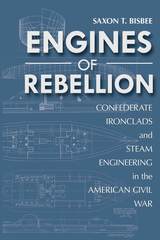 Engines of Rebellion: Confederate Ironclads and Steam Engineering in the American Civil War
Saxon T. Bisbee
University of Alabama Press, 2018 A challenge to the prevailing idea that Confederate ironclads were inherently defective
The development of steam propulsion machinery in warships during the nineteenth century, in conjunction with iron armor and shell guns, resulted in a technological revolution in the world’s navies. Warships utilizing all of these technologies were built in France and Great Britain in the 1850s, but it was during the American Civil War that large numbers of ironclads powered solely by steam proved themselves to be quite capable warships.
Historians have given little attention to the engineering of Confederate ironclads, although the Confederacy was often quite creative in building and obtaining marine power plants. Engines of Rebellion: Confederate Ironclads and Steam Engineering in the American Civil War focuses exclusively on ships with American built machinery, offering a detailed look at marine steam-engineering practices in both northern and southern industry prior to and during the Civil War.
Beginning with a contextual naval history of the Civil War, the creation of the ironclad program, and the advent of various technologies, Saxon T. Bisbee analyzes the armored warships built by the Confederate States of America that represented a style adapted to scarce industrial resources and facilities. This unique historical and archaeological investigation consolidates and expands on the scattered existing information about Confederate ironclad steam engines, boilers, and propulsion systems.
Through analysis of steam machinery development during the Civil War, Bisbee assesses steam plants of twenty-seven ironclads by source, type, and performance, among other factors. The wartime role of each vessel is discussed, as well as the stories of the people and establishments that contributed to its completion and operation. Rare engineering diagrams never before published or gathered in one place are included here as a complement to the text.
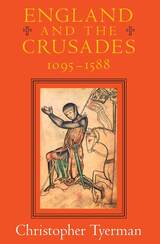 England and the Crusades, 1095-1588
Christopher Tyerman
University of Chicago Press, 1988 A potent mixt of salvation and adventure, the Crusades were one of the most prominent features of medieval Europe, reflecting and directing religious and secular movements in Western society for half a millennium. Christopher Tyerman offers the first book-length study of the role of England in the Crusades. Focusing on the courtroom and council chamber rather than the battlefield, he demonstrates the impact of the Crusades on the political and economic functions of English society.
Drawing on a wide range of archival, chronicle, and literary evidence, Tyerman brings to life the royal personalities, foreign policy, political intrigue, taxation and fundraising, and the crusading ethos that gripped England for hundreds of years.
"An ambitious task to undertake. . . . Tyerman has done the job not only thoroughly but brilliantly. . . . A highly impressive study, deserving rich praise and wide readership."—Norman Housley, Times Literary Supplement
"Christopher Tyerman has written a wonderful book. . . . [He] manages to confront thorny issues in scholarship and to contribute new perspectives on them."—William Chester Jordan, American Historical Review
"Tyerman provides valuable insights into preaching, recruitment, and the funding and organisation of crusading expeditions. . . . Fascinating new perspectives on English history."—Edward Powell, Sunday Times
"Impressive. . . . Tyerman's research has yielded valuable evidence, and his admirably lucid argument sheds new light on a complex and bloody period in English history."—Virginia Quarterly Review
 England in 1819: The Politics of Literary Culture and the Case of Romantic Historicism
James Chandler
University of Chicago Press, 1998 Many of the writers from 1819, argues James Chandler, were acutely aware not only of their writing's place in history, but also of its place as history—a realization of a literary "spirit of the age" that resonates strongly with the current "return to history" in literary studies. Chandler explores the ties between Romantic and contemporary historicism and offers a series of cases of his own built around key texts from 1819.
"1819? At first sight, it might not seem a 'hot date'; but as James Chandler argues in his powerful book, it would be a mistake to overlook a year of such exceptional political conflagration and literary pyrotechnics in British history. Chandler's study is a wide-ranging, enormously ambitious, densely packed, closely argued work."—John Brewer, New Republic
"The book's largest argument, and the source of its considerable revelations, is that late twentieth-century practices of cultural history-writing have their roots in the peculiar Romantic historicism born in post-Waterloo Britain."—Jon Klancher, Times Literary Supplement
"A monumental work of scholarship."—Terry Eagleton, The Independent
England, Ireland, and the Insular World: Textual and Material Connections in the Early Middle Ages
Mary Clayton
Arizona Center for Medieval and Renaissance Studies, 2017
ISAS Dublin 2013. England, Ireland and the Insular World: Textual and Material Connections in the Early Middle Ages is a collection of twelve essays related to the theme of the 2013 conference of the International Society of Anglo-Saxonists, ‘Insular Cultures’. Contributors cover a broad range of topics, from early medieval agriculture in Ireland and England, to sculpture, manuscript illumination and script, homilies, hagiography, aristocratic gift-giving, relics, calendars, Beowulf, and Anglo-Saxon perceptions of the Celtic peoples, considering connections, parallels and differences between Anglo-Saxon England and its insular neighbors. The volume will be of interest to all those working on Early Medieval history, literature, archaeology, liturgy, art, and manuscripts.
England's Asian Renaissance
Su Fang Ng
University of Delaware Press, 2022 England's Asian Renaissance explores how Asian knowledges, narratives, and customs inflected early modern English literature. Just as Asian imports changed England's tastes and enriched the English language, Eastern themes, characters, and motifs helped shape the country's culture and contributed to its national identity. Questioning long-standing dichotomies between East and West and embracing a capacious understanding of translatio as geographic movement, linquistic transformation, and cultural grafting, the collection gives pride of place to convergence, approximation, and hybridity, thus underscoring the radical mobility of early modern culture. In so doing, England's Asian Renaissance also moves away from entrenched narratives of Western cultural sovereignty to think anew England's debts to Asia.
Published by the University of Delaware Press. Distributed worldwide by Rutgers University Press.
England's Discontents: Political Cultures and National Identities
Mike Wayne
Pluto Press, 2018 England’s political-economic scene is a battleground of competing ideologies, all under the umbrella of neoliberalism. From conservatism to socialism, what forces have historically shaped these political cultures and people’s attachment to them?
Examining five political ideologies at play in England—conservatism, liberalism, economic liberalism, social democracy, and socialism—Mike Wayne unearths the historical rationale for their relationship to cultural identities, including rural England, gentlemanly capitalism, industrialism, and Empire. By revealing how national identity, class, and political economy intersect, Wayne is able to elucidate England’s enduring attachment to the neoliberal economic system.
Grounding his cultural and material perspective in Gramscian and Marxist theory, Wayne illuminates the cultural dimensions of English political life in the last century.
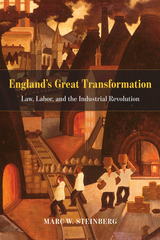 England's Great Transformation: Law, Labor, and the Industrial Revolution
Marc W. Steinberg
University of Chicago Press, 2016 With England’s Great Transformation, Marc W. Steinberg throws a wrench into our understanding of the English Industrial Revolution, largely revising the thesis at heart of Karl Polanyi’s landmark The Great Transformation. The conventional wisdom has been that in the nineteenth century, England quickly moved toward a modern labor market where workers were free to shift from employer to employer in response to market signals. Expanding on recent historical research, Steinberg finds to the contrary that labor contracts, centered on insidious master-servant laws, allowed employers and legal institutions to work in tandem to keep employees in line.
Building his argument on three case studies—the Hanley pottery industry, Hull fisheries, and Redditch needlemakers—Steinberg employs both local and national analyses to emphasize the ways in which these master-servant laws allowed employers to use the criminal prosecutions of workers to maintain control of their labor force. Steinberg provides a fresh perspective on the dynamics of labor control and class power, integrating the complex pathways of Marxism, historical institutionalism, and feminism, and giving readers a subtle yet revelatory new understanding of workplace control and power during England’s Industrial Revolution.
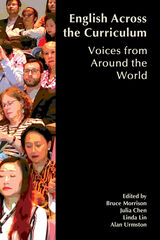 English across the Curriculum: Voices from around the World
Bruce Morrison
University Press of Colorado, 2021 Inspired by papers presented at the second international English Across the Curriculum (EAC) conference, this book provides a platform for those involved in the EAC movement to exchange insights, explore new strategies and directions, and share experiences. It speaks not only to EAC practitioners but also to scholars in a range of related fields, whether they are considering starting an EAC-like initiative or are already involved in an established EAC, Content and Language Integrated Learning (CLIL), or Writing Across the Curriculum (WAC) program. The chapters in the book testify to challenges faced, opportunities presented, and a passion displayed for embedding academic English literacy in courses in a range of disciplines at institutions around the world. They also highlight the persistence and determination of teachers in creating and shaping valuable learning experiences and ongoing support for their students.
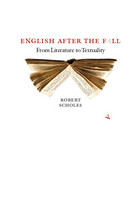 English after the Fall: From Literature to Textuality
Robert Scholes
University of Iowa Press, 2011 Robert Scholes’s now classic Rise and Fall of English was a stinging indictment of the discipline of English literature in the United States. In English after the Fall, Scholes moves from identifying where the discipline has failed to providing concrete solutions that will help restore vitality and relevance to the discipline. With the self-assurance of a master essayist, Scholes explores the reasons for the fallen status of English and suggests a way forward. Arguing that the fall of English as a field of study is due, at least in part, to the narrow view of “literature” that prevails in English departments, Scholes charts how the historical rise of English as a field of study during the early twentieth century led to the domination of modernist notions of verbal art, ultimately restricting English studies to a narrow cannon of approved texts. After tracing the various meanings attached to the word “literature” since the Renaissance, Scholes argues that the concept of it that currently shapes the work of English departments excludes both powerful sacred documents (from the Declaration of Independence to the Bible) and pleasurable, profane works that involve the performance of roles like those of clown and teacher in many media (including popular musicals, opera, and film)—and that both sorts of works should be studied in English courses. English after the Fall is a bold manifesto for the replacement of literature with what Scholes calls textuality—an expansive and ecumenical notion of what we read and write—as the primary object of English instruction. This concise and persuasive work is destined to become required reading for anyone who cares about the future of the humanities.
English Aristocratic Women and the Fabric of Piety, 1450-1550
Barbara J. Harris
Amsterdam University Press, 2018 The role played by women in the evolution of religious art and architecture has been largely neglected. This study of upper-class women in the fifteenth and sixteenth centuries corrects that oversight, uncovering the active role they undertook in choosing designs, materials, and locations for monuments, commissioning repairs and additions to many parish churches, chantry chapels, and almshouses characteristic of the English countryside. Their preferred art, Barbara J. Harris shows, reveals their responses to the religious revolution and signifies their preferred identities.
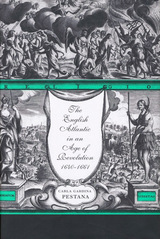 The English Atlantic in an Age of Revolution, 1640–1661
Carla Gardina Pestana
Harvard University Press, 2007 Between 1640 and 1660, England, Scotland, and Ireland faced civil war, invasion, religious radicalism, parliamentary rule, and the restoration of the monarchy. Carla Gardina Pestana offers a sweeping history that systematically connects these cataclysmic events and the development of the infant plantations from Newfoundland to Surinam.
By 1660, the English Atlantic emerged as religiously polarized, economically interconnected, socially exploitative, and ideologically anxious about its liberties. War increased both the proportion of unfree laborers and ethnic diversity in the settlements. Neglected by London, the colonies quickly developed trade networks, especially from seafaring New England, and entered the slave trade. Barbadian planters in particular moved decisively toward slavery as their premier labor system, leading the way toward its adoption elsewhere. When by the 1650s the governing authorities tried to impose their vision of an integrated empire, the colonists claimed the rights of "freeborn English men," making a bid for liberties that had enormous implications for the rise in both involuntary servitude and slavery. Changes at home politicized religion in the Atlantic world and introduced witchcraft prosecutions.
Pestana presents a compelling case for rethinking our assumptions about empire and colonialism and offers an invaluable look at the creation of the English Atlantic world.
English Burlesque Poetry, 1700-1750
Richmond P. Bond
Harvard University Press This is the first exhaustive handling of one of the most important and interesting types of English poetry in the period from 1700 to 1750. Pope’s The Rape of the Lock, Browne’s A Pipe of Tobacco, Shenstone’s The School-Mistress, and scores of other less-known burlesques are here analyzed. Full information is given on each in the Register, where the pertinent facts are arranged with the view to facilitate reference and to avoid hindering the progress of the main discussion. The nature of burlesque is defined, criticism of burlesque is presented at some length, the types are distinguished, and non-English examples are treated as they affected the eighteenth century.
English Chantries: The Road to Dissolution
Alan Kreider
Harvard University Press, 1979 The chantries of medieval England were founded in the belief that intercessory masses could shorten the period spent by souls in purgatory. They played a greater role in the daily life of sixteenth-century Englishmen than did monasteries, yet the dissolution of the monasteries has been a far more popular subject of study than the dissolution of the chantries. Alan Kreider writes about the social, religious, and numerical importance of the chantries. He explains the significance of purgatory in their founding, as well as the theological and economic changes of the 1530s and 1540s that caused the government to jettison traditional practices concerning prayers for the deceased.
English Church Dedications
Nicholas Orme
University of Exeter Press, 1997 People assume that parish church dedications are ancient, but many of those in use today are inventions of the eighteenth and nineteenth centuries, and the original dedications were entirely different. This startling discovery reveals fresh information about the history of English parish churches and throws light on religion in England in all periods of history.
Part One of English Church Dedications is a general history of Church dedications in England from Roman times to the present day. Part Two provides a gazetteer of dedications in Cornwall and Devon, with dates and references, showing how far each one can be traced back and what changes and misunderstandings have occurred. It offers totally new evidence about the Cornish saints and provides a guide and model for similar research in other counties.
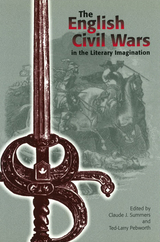 The English Civil Wars in the Literary Imagination
Edited by Claude J. Summers & Ted-Larry Pebworth
University of Missouri Press, 1999
The English civil wars loom large in seventeenth-century history and literature. This period, which culminated in the execution of a king, the dismantling of the Established Church, the inauguration of a commonwealth, and the assumption of rule by a lord protector, was one of profound change and disequilibrium. Focusing on writers as major as Milton, Marvell, Herrick, and Vaughan, and as misunderstood as Fane, Overton, and the poet Eliza, the fifteen essays in this collection discuss not only the representation of the civil wars but also the ways in which the civil wars were anticipated, refigured, and refracted in the century's literary imagination.
Although all of the essays are historically grounded and critically based, they vary widely in their historical perspectives and critical techniques, as well as in their scope and area of concentration. Six of the essays are on Royalist literary figures, six are on figures traditionally associated with the Parliamentarian side of the civil wars, two consider both, and the remaining essay examines how Royalist writers refashioned a puritan literary trope.
Unified through the contributors' concentration on "moderate" voices and their recurrent concerns with the ambiguities of literary response, The English Civil Wars in the Literary Imagination provides an important understanding of the English civil wars' manifold and sometimes indirect presence in the literature of the period.
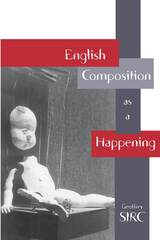 English Composition As A Happening
Geoffrey Sirc
Utah State University Press, 2002 "Contemporary Composition is still inflected by the epistemic turn taken in the 1980s, convincing me that we need to remember what we've forgotten—namely, how impassioned resolves and thrilling discoveries were abandoned and why. I'd like to retrace the road not taken in Composition Studies, to salvage what can still be recovered... I want to inspect the wreckage, in order to show what was the promise of the Happenings for Composition, as well as the huge gray longueur of its pale replacement, Eighties Composition. In so doing, I hope to begin a reconfiguration of our field's pre- and after history." What happened to the bold, kicky promise of writing instruction in the 1960s? The current conservative trend in composition is analyzed allegorically by Geoffrey Sirc in this book-length homage to Charles Deemer's 1967 article, in which the theories and practices of Happenings artists (multi-disciplinary performance pioneers) were used to invigorate college writing. Sirc takes up Deemer's inquiry, moving through the material and theoretical concerns of such pre- and post-Happenings influences as Duchamp and Pollock, situationists and punks, as well as many of the Happenings artists proper.
 The English Conquest of Jamaica: Oliver Cromwell’s Bid for Empire
Carla Gardina Pestana
Harvard University Press, 2017 In 1654, England’s Lord Protector Oliver Cromwell conceived a plan of breathtaking ambition: the conquest of Spain’s vast American empire. As the first phase of his Western Design, a large expedition sailed to the West Indies, under secret orders to take Spanish colonies. The English Conquest of Jamaica presents entrenched imperial fantasies confronting Caribbean realities. It captures the moment when the revolutionary English state first became a major player in the Atlantic arena.
Although capturing Jamaica was supposed to be only the first step in Cromwell’s scheme, even that relatively modest acquisition proved difficult. The English badly underestimated the myriad challenges they faced, starting with the unexpectedly fierce resistance offered by the Spanish and other residents who tenaciously defended their island. After sixteen long years Spain surrendered Jamaica and acceded to an English presence in the Americas in the 1670 Treaty of Madrid. But by then, other goals—including profit through commerce rather than further conquest—had superseded the vision behind the Western Design.
Carla Gardina Pestana situates Cromwell’s imperial project in the context of an emerging Atlantic empire as well as the religious strife and civil wars that defined seventeenth-century England. Though falling short of its goal, Cromwell’s plan nevertheless reshaped England’s Atlantic endeavors and the Caribbean region as a whole. Long before sugar and slaves made Jamaica Britain’s most valuable colony, its acquisition sparked conflicts with other European powers, opened vast tropical spaces to exploitation by the purportedly industrious English, and altered England’s engagement with the wider world.
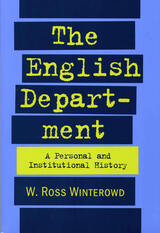 The English Department: A Personal and Institutional History
W. Ross Winterowd
Southern Illinois University Press, 1998 Tounderstand the history of "English," Ross Winterowd insists, one must understand how literary studies, composition-rhetoric studies, and influential textbooks interrelate. Stressing the interrelationship among these three forces, Winterowd presents a history of English studies in the university since the Enlightenment. Winterowd’s history is unique in three ways. First, it tells the whole story of English studies: it does not separate the history of literary studies from that of composition-rhetoric studies, nor can it if it is going to be an authentic history. Second, it traces the massive influence on English studies exerted by textbooks such as Adventures in Literature, Understanding Poetry, English in Action, and the Harbrace College Handbook. Finally, Winterowd himself is very much a part of the story, a partisan with more than forty years of service to the discipline, not simply a disinterested scholar searching for the truth. After demonstrating that literary studies and literary scholars are products of Romantic epistemology and values, Winterowd further invites controversy by reinterpreting the Romantic legacy inherited by English departments. His reinterpretation of major literary figures and theory, too, invites discussion, possibly argument. And by directly contradicting current histories of composition-rhetoric that allow for no points of contact with literature, Winterowd intensifies the argument by explaining the development of composition-rhetoric from the standpoint of literature and literary theory.
English Electric Canberra
Mick Gladwin
Amsterdam University Press, 2023 From 1949 to 2006 the English Electric Canberra has served in the frontline of the Royal Air Force around the world. The Canberra became the UK's first jet bomber, although that was not its only role, undertaking other tasks such as, pilot/navigator training, photographic reconnaissance, target-tag and electronic countermeasures duties to name a few.
The story of the Canberra came to a close for the RAF on the 22nd June 2006 when the last remaining Canberra PR.9s retiring from service life after returning from operational duties. The author had the honour to serve with them in their twilight days of their careers.
 English for Dispute Resolution: Mastering Negotiation, Mediation, and Alternative Dispute Resolution
Barrie J. Roberts
University of Michigan Press, 2025 English for Dispute Resolution shows intermediate to advanced-level ESL students and professionals how to negotiate and mediate in English. Following the approaches often used in US law and business schools to teach Alternative Dispute Resolution (ADR), the book balances readings on ADR theory and strategies with activities, practice role plays, and self-reflection. It provides complex information and step-by-step instructions in plain English, clearly explains key ADR terms and idioms, and highlights cross-cultural communication issues that readers may encounter. Whether they are using English for Dispute Resolution as a self-study resource or a course textbook, readers can use the book to develop their own unique negotiation and mediation styles in English and improve their professional-level English skills and soft skills for any purpose. Chapters introduce Alternative Dispute Resolution, negotiation ethics, competitive and collaborative negotiation, negotiation game theory, apologies, drafting written agreements, and mediation. After an engaging hypothetical case that introduces the chapter’s key points, each chapter provides warm-up questions, readings about dispute resolution theory and strategies, language tips, and activities and sample phrases to practice applying chapter lessons to real-world disputes. Chapters also invite readers to explore topics of interest, such as dispute resolution in their home countries, personal and professional lives, and current events, and the growing use of Artificial Intelligence (AI) in ADR. Readers will simultaneously build confidence in their English and cross-cultural dispute resolution skills. English for Dispute Resolution offers readers: - Lessons that explain the theories behind Alternative Dispute Resolution, negotiation ethics, competitive and collaborative negotiation, and mediation
- Activities that help them develop their own unique negotiation strategies and styles along with critical thinking, problem-solving, reading, writing, listening, and speaking.
- Step-by-step guidance, sample sentences, and practice activities for applying chapter lessons to real-world disputes.
- Opportunities to explore topics of interest, such as dispute resolution in their home countries, personal and professional lives and current events, and the growing use of Artificial Intelligence (AI) in ADR.
- Key ADR terms and idioms in plain, accessible English.
- Specific tips to improve cross-cultural communication for negotiating and mediating in English.
- A companion website with downloadable checklists, forms, and sample language that can be used for classroom role-plays and real-world negotiations and mediations.
ESL and ESP instructors can use this book along with The Teaching Guide for English for Dispute Resolution to supplement Legal or Business English courses, teach new standalone negotiation or mediation courses, build students’ soft skills, or to add engaging activities and role-plays to ESL courses.
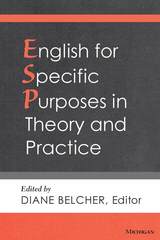 English for Specific Purposes in Theory and Practice
Diane Belcher, Editor
University of Michigan Press, 2009
The field of English for Specific Purposes (ESP) is among the richest areas of second language research and practice because increasing globalization and changing technologies spawn new modes of intercultural connection and new occasions for second language use. English for Specific Purposes in Theory and Practice compasses this burgeoning field by presenting new research and commentary from some of the field’s leading scholars.
This volume explores ESP from academic (secondary and tertiary), occupational (business, medical, and legal), and socio-cultural perspectives. Recurring motifs throughout the volume are the effects of globalization, English as a lingua franca, and the impact of migrant populations. One of the major questions this volume seeks to answer is, How can ESP instructors meet their own teacher knowledge needs? Also considered is, How have ESP practitioners succeeded in gaining control of the knowledge they need to address their students’ needs?
English Hours
Ferran Soldevila, Translated by Alan Yates
Fum d'Estampa Press, 2020 Written in the form of a diary that runs from 1926 to 1928, English Hours is a delightful account of a Catalan in the UK during the interwar period. In it, Soldevila writes endearingly of the country and people that he meets while providing us with an invaluable “foreign” look at this critical period in 20th-century Great Britain.
English Hours is not only an insight into British society during this period, but also provides a detailed look at the way two cultures can clash and yet how, ultimately, it is the people and individuals who make up our countries.
 The English House, 1860-1914: The Flowering of English Domestic Architecture
Gavin Stamp and André Goulancourt
University of Chicago Press, 1986 Ranging from picturesque cottages to Romantic manor houses, this illustrated survey of British domestic architecture in the Victorian era documents styles still popular today. André Goulancourt's superb photographs of urban, suburban, and country homes are combined with Gavin Stamp's commentary to unique effect. What emerges is not only a stunning visual record but also a lesson on the creative development of national and vernacular building traditions.
Stamp suggests that the characteristic features of British domestic design in this era were symbolic and interpretive as well as functional. Reacting against modern industrialism and materialism, Victorian builders, in tandem with the Arts and Crafts Movement in Britain, revived vernacular traditions. Emphasis was placed on the proper use of building materials found locally and on elements that would later recur in the American Prairie House: the heavy pitched roof and the oversized and centrally placed chimney and fireplace. A number of domestic styles that emerged during this period, such as the Shingle style and the Queen Anne style, were imported by American architects and clients who shared the Victorian reverence for home, privacy, and the family unit.
In addition to the interpretive text and catalog of eighty-seven buildings, The English House, 1860-1914 includes brief biographies of the sixty-three architects represented, including Pugin, Butterfield, Street, and Prior. Historians of both English and American architecture, as well as practicing architects and critics, will welcome this comprehensive volume.
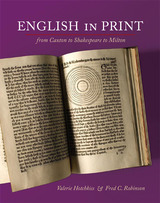 English in Print from Caxton to Shakespeare to Milton
Valerie Hotchkiss and Fred C. Robinson
University of Illinois Press, 2007 English in Print from Caxton to Shakespeare to Milton examines the history of early English books, exploring the concept of putting the English language into print with close study of the texts, the formats, the audiences, and the functions of English books. Lavishly illustrated with more than 130 full-color images of stunning rare books, this volume investigates a full range of issues regarding the dissemination of English language and culture through printed works, including the standardization of typography, grammar, and spelling; the appearance of popular literature; and the development of school grammars and dictionaries. Valerie Hotchkiss and Fred C. Robinson provide engaging descriptions of more than a hundred early English books drawn from the Rare Book and Manuscript Library at the University of Illinois, Urbana-Champaign, and the Elizabethan Club of Yale University. The study nearly mirrors the chronological coverage of Pollard and Redgrave's famous Short-Title Catalogue (1475-1640), beginning with William Caxton, England's first printer, and ending with John Milton, the English language's most eloquent defender of the freedom of the press in his Areopagitica of 1644. William Shakespeare, neither a printer nor a writer much concerned with publishing his own plays, nonetheless deserves his central place in this study because Shakespeare imprints, and Renaissance drama in general, provide a fascinating window on the world of English printing in the period between Caxton and Milton.
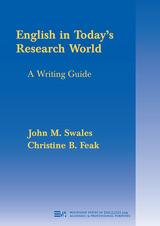 English in Today's Research World: A Writing Guide
John M. Swales and Christine B. Feak
University of Michigan Press, 2000 The authors of Academic Writing for Graduate Students have written a book for the next level of second language writing. English in Today's Research World offers students a very high level of writing instruction, with a specific focus on the projects students undertake--such as dissertations and conference abstracts--at the end of their university work or as they begin careers in research or academia.
In addition to instruction on writing for publication, English in Today's Research World provides needed advice on applications, recommendations, and requests--types of communications that are particularly vulnerable to influences from national cultural expectations and conventions and that, therefore, place the NNS writer at increased disadvantage.
The text is both a reference manual and a course book, so that researchers can continue to use the book after they have completed their formal education. New ESL/EFL teachers can use English in Today's Research World as a reference book for themselves or as a teaching aid in the classroom.
 The English Language Common Law Workbook: A Resource for Students Studying English-medium Law Degrees
Ian Collins and David Brody
University of Michigan Press, 2025 While thousands of international students study for Masters of Laws (LLM) degrees or other legal qualifications every year in the U.S. and other common law jurisdictions, many struggle to acculturate to the language demands of law school. Even with international exam scores demonstrating high levels of English, these students need to understand the concepts of common law to be successful. Since the hurdles to achieving success in EMI Law courses are greater than simply the challenge of mastering discipline-specific terminology, or learning particular grammar structures in legal texts, students need a resource that will help them learn to “think like a common law lawyer.”
The English Language Common Law Workbook is designed to support students in developing the core competencies necessary for studying in a common law context. It provides readings and exercises based on authentic legal materials for practicing critical reading and writing skills. In particular, it includes an extensive number of statutes and cases and accompanying exercises that give students an opportunity to work with the type of sources they will encounter in English-medium law degree programs. By emphasizing common law principles throughout, the book helps international students coming from non–common law jurisdictions familiarize themselves with how statutes and cases in common law countries are written and structured. Students are supported in critically reading statutes and cases by focusing on key terminology and language structures. Finally, the book supports students in applying the skills they learn to construct basic case briefs and answer hypothetical legal questions using the IRAC structure.
CEFR Levels: B2–C2
 English Language Criticism on the Foreign Novel, 1965–1975: 1965-1975
Harriet Semmes Alexander
Ohio University Press, 1989 Critical interest in foreign novels, especially the Latin American and African novel, has burgeoned in the past two decades. The purpose of this reference bibliography is to provide easier access to the criticism produced from 1965 to 1975 on novels published in Africa, Latin America, Europe, Asia, Canada, Australia, and the middle East. A second volume will cover criticism between 1976 and 1985. Throughout this work, the term “foreign novel” includes novels and other longer works of fiction produced in all countries other than the United States and the United Kingdom. Coverage ranges in time of writing from Apuleius’ Metamorphosis (first century, A.D.) and Murasaki’s Tale of Genji (11th century) to Garcia Marquez’s 100 Years of Solitude (1967) and Margaret Atwood’s Surfacing (1972). The 277 journals—chosen primarily because of their wide circulation—and 584 books indexed for relevant material contribute to the 13,000 bibliographic citations on 1,500 authors. This is a reference tool which is surely essential for any library or world literature scholar.
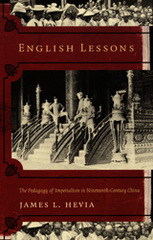 English Lessons: The Pedagogy of Imperialism in Nineteenth-Century China
James L. Hevia
Duke University Press, 2003 Inserting China into the history of nineteenth-century colonialism, English Lessons explores the ways that Euroamerican imperial powers humiliated the Qing monarchy and disciplined the Qing polity in the wake of multipower invasions of China in 1860 and 1900. Focusing on the processes by which Great Britain enacted a pedagogical project that was itself a form of colonization, James L. Hevia demonstrates how British actors instructed the Manchu-Chinese elite on “proper” behavior in a world dominated by multiple imperial powers. Their aim was to “bring China low” and make it a willing participant in British strategic goals in Asia. These lessons not only transformed the Qing dynasty but ultimately contributed to its destruction. Hevia analyzes British Foreign Office documents, diplomatic memoirs, auction house and museum records, nineteenth-century scholarly analyses of Chinese history and culture, campaign records, and photographs. He shows how Britain refigured its imperial project in
China as a cultural endeavor through examinations of the circulation of military loot in Europe, the creation of an art history of “things Chinese,” the construction of a field of knowledge about China, and the Great Game rivalry between Britain, Russia, and the Qing empire in Central Asia. In so doing, he illuminates the impact of these elements on the colonial project and the creation of a national consciousness in China.
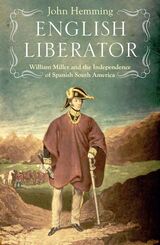 English Liberator: William Miller and the Independence of Spanish South America
John Hemming
Haus Publishing, 2025 An expansive biography of William (or Guillermo, as he is known in South America) Miller, a soldier well-recognized and loved not just in modern Peru but across the swath of nations liberated from Spanish rule during the nineteenth century.
During Admiral Thomas Cochrane’s demolition of imperial Spain’s naval presence in the Pacific amid the revolutionary wars for Spanish South America, all the raids were carried out by his marines under a young officer called William Miller. One of three sons of a baker in a small village in Kent, with no family influence, money, or even secondary education, he came from nowhere, but he went on to have a meteoric rise in the armies that liberated the nations of Chile and Peru. By the time of Ayacucho in 1824, the large battle that ended Spanish rule in South America, there were seven generals in the royalist Spanish army and five on the patriot side. Eleven of these generals were Hispanic; Miller was the only foreigner.
Set in the context of the great European powers’ weakening grip over their global empires and the ensuing wars of independence in Spanish South America, John Hemming’s gripping narrative spans Miller’s time as a teenage soldier in Wellington’s Peninsular War, his contribution to the liberation of the new nations Chile and Peru, and his years in diplomacy thereafter. Drawing on written accounts by many of Miller’s contemporaries in addition to a wealth of modern research, Hemming casts the anti-imperialist, anti-slavery soldier as highly regarded by all the leaders of independence and popular with ordinary people and peasant farmers due to his own humble origins—a legacy evidenced by his burial in the Pantheon of founding fathers of Peru decades after the battles in which he made his name.
English Lit: Poems
Bernard Clay
Ohio University Press, 2021 Autobiographical poetry from one of Kentucky’s rising Affrilachian literary stars. Bernard Clay’s autobiographical poetry debut, English Lit, juxtaposes the roots of Black male identity against an urban and rural Kentucky landscape. Hailed as one of the most authentic voices of his generation, Clay artfully renders coming-of-age in the predominately Black West End of Louisville, Kentucky. Balancing the spirited grit of a farmer and the careful lyricism of a poet, English Lit is a triumph of new Affrilachian—African American and Appalachian—literature.
English Literary Renaissance, volume 52 number 1 (Winter 2022)
The University of Chicago Press
University of Chicago Press Journals, 2022 This is volume 52 issue 1 of English Literary Renaissance. English Literary Renaissance (ELR) is a leading journal for new research in Tudor and Stuart literature, including the Sidneys, Spenser, Shakespeare, Jonson, Donne, Milton, and their many contemporaries. In addition to critical work, ELR also publishes review essays and occasional editions of short significant manuscripts, such as letters, legal documents with literary relevance, and poetry.
English Literary Renaissance, volume 52 number 2 (Spring 2022)
The University of Chicago Press
University of Chicago Press Journals, 2022 This is volume 52 issue 2 of English Literary Renaissance. English Literary Renaissance (ELR) is a leading journal for new research in Tudor and Stuart literature, including the Sidneys, Spenser, Shakespeare, Jonson, Donne, Milton, and their many contemporaries. In addition to critical work, ELR also publishes review essays and occasional editions of short significant manuscripts, such as letters, legal documents with literary relevance, and poetry.
English Literary Renaissance, volume 52 number 3 (Autumn 2022)
The University of Chicago Press
University of Chicago Press Journals, 2022 This is volume 52 issue 3 of English Literary Renaissance. English Literary Renaissance (ELR) is a leading journal for new research in Tudor and Stuart literature, including the Sidneys, Spenser, Shakespeare, Jonson, Donne, Milton, and their many contemporaries. In addition to critical work, ELR also publishes review essays and occasional editions of short significant manuscripts, such as letters, legal documents with literary relevance, and poetry.
English Literary Renaissance, volume 53 number 1 (Winter 2023)
The University of Chicago Press
University of Chicago Press Journals, 2023 This is volume 53 issue 1 of English Literary Renaissance. English Literary Renaissance (ELR) is a leading journal for new research in Tudor and Stuart literature, including the Sidneys, Spenser, Shakespeare, Jonson, Donne, Milton, and their many contemporaries. In addition to critical work, ELR also publishes review essays and occasional editions of short significant manuscripts, such as letters, legal documents with literary relevance, and poetry.
English Literary Renaissance, volume 53 number 2 (Spring 2023)
The University of Chicago Press
University of Chicago Press Journals, 2023 This is volume 53 issue 2 of English Literary Renaissance. English Literary Renaissance (ELR) is a leading journal for new research in Tudor and Stuart literature, including the Sidneys, Spenser, Shakespeare, Jonson, Donne, Milton, and their many contemporaries. In addition to critical work, ELR also publishes review essays and occasional editions of short significant manuscripts, such as letters, legal documents with literary relevance, and poetry.
English Literary Renaissance, volume 53 number 3 (Autumn 2023)
The University of Chicago Press
University of Chicago Press Journals, 2023 This is volume 53 issue 3 of English Literary Renaissance. English Literary Renaissance (ELR) is a leading journal for new research in Tudor and Stuart literature, including the Sidneys, Spenser, Shakespeare, Jonson, Donne, Milton, and their many contemporaries. In addition to critical work, ELR also publishes review essays and occasional editions of short significant manuscripts, such as letters, legal documents with literary relevance, and poetry.
English Literary Renaissance, volume 54 number 1 (Winter 2024)
The University of Chicago Press
University of Chicago Press Journals, 2024 This is volume 54 issue 1 of English Literary Renaissance. English Literary Renaissance (ELR) is a leading journal for new research in Tudor and Stuart literature, including the Sidneys, Spenser, Shakespeare, Jonson, Donne, Milton, and their many contemporaries. In addition to critical work, ELR also publishes review essays and occasional editions of short significant manuscripts, such as letters, legal documents with literary relevance, and poetry.
English Literary Renaissance, volume 54 number 2 (Spring 2024)
The University of Chicago Press
University of Chicago Press Journals, 2024 This is volume 54 issue 2 of English Literary Renaissance. English Literary Renaissance (ELR) is a leading journal for new research in Tudor and Stuart literature, including the Sidneys, Spenser, Shakespeare, Jonson, Donne, Milton, and their many contemporaries. In addition to critical work, ELR also publishes review essays and occasional editions of short significant manuscripts, such as letters, legal documents with literary relevance, and poetry.
English Literary Renaissance, volume 54 number 3 (Autumn 2024)
The University of Chicago Press
University of Chicago Press Journals, 2024 This is volume 54 issue 3 of English Literary Renaissance. English Literary Renaissance (ELR) is a leading journal for new research in Tudor and Stuart literature, including the Sidneys, Spenser, Shakespeare, Jonson, Donne, Milton, and their many contemporaries. In addition to critical work, ELR also publishes review essays and occasional editions of short significant manuscripts, such as letters, legal documents with literary relevance, and poetry.
English Literary Renaissance, volume 55 number 1 (Winter 2025)
The University of Chicago Press
University of Chicago Press Journals, 2025 This is volume 55 issue 1 of English Literary Renaissance. English Literary Renaissance (ELR) is a leading journal for new research in Tudor and Stuart literature, including the Sidneys, Spenser, Shakespeare, Jonson, Donne, Milton, and their many contemporaries. In addition to critical work, ELR also publishes review essays and occasional editions of short significant manuscripts, such as letters, legal documents with literary relevance, and poetry.
English Literary Renaissance, volume 55 number 2 (Spring 2025)
The University of Chicago Press
University of Chicago Press Journals, 2025 This is volume 55 issue 2 of English Literary Renaissance. English Literary Renaissance (ELR) is a leading journal for new research in Tudor and Stuart literature, including the Sidneys, Spenser, Shakespeare, Jonson, Donne, Milton, and their many contemporaries. In addition to critical work, ELR also publishes review essays and occasional editions of short significant manuscripts, such as letters, legal documents with literary relevance, and poetry.
English Literary Renaissance, volume 55 number 3 (Autumn 2025)
The University of Chicago Press
University of Chicago Press Journals, 2025 This is volume 55 issue 3 of English Literary Renaissance. English Literary Renaissance (ELR) is a leading journal for new research in Tudor and Stuart literature, including the Sidneys, Spenser, Shakespeare, Jonson, Donne, Milton, and their many contemporaries. In addition to critical work, ELR also publishes review essays and occasional editions of short significant manuscripts, such as letters, legal documents with literary relevance, and poetry.
 English Mercuries: Soldier Poets in the Age of Shakespeare
Adam N. McKeown
Vanderbilt University Press, 2009 English Mercuries examines war and literature through the writings of veterans who came home from their deployments to pursue literary careers. From their often neglected writings emerges a new picture of the Elizabethan world at war. For centuries Elizabethan England has been characterized by booming patriotism and martial energy, and the literature of this period, epitomized in works like Shakespeare's Henry V, has been seen as celebrating a proud and defiant kingdom unified around its wars with Spain. Beneath this patriotic veneer, however, was a country withering under the costs of seemingly endless military commitments and ripped apart by doubts about the purpose of war and mistrust of state officials who advanced their own political interests through war at the expense of the people who had to fight and pay for it. These misgivings are a powerful undercurrent in much of the literature of the period, even the most ostensibly patriotic works, but it is in the writings on war by soldier poets where they are most clearly pronounced. Fashioning themselves as servants of both Mars and Mercury (the god of war and the god of writing), Elizabethan soldier poets focused their war stories on the gritty realities of military campaigning, the price individuals paid for serving the state, and the difficulties of returning to civilian life. The book reconsiders some familiar writers like John Donne and Ben Jonson in the context of their military experiences and provides comprehensive studies of some important but underappreciated soldier poets like Thomas Churchyard, George Gascoigne, and John Harington.
|
|
